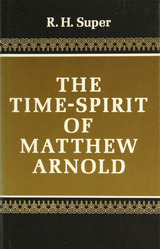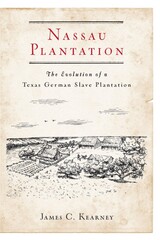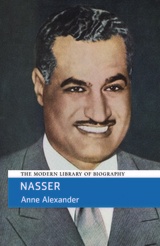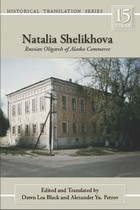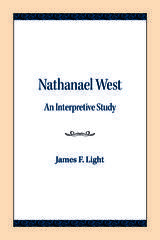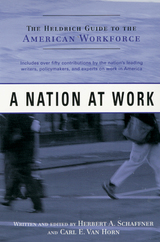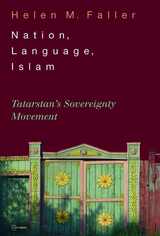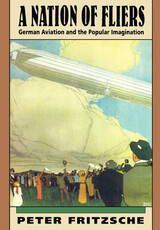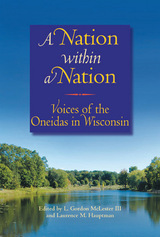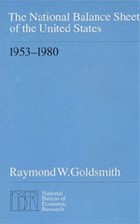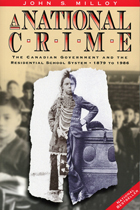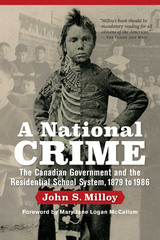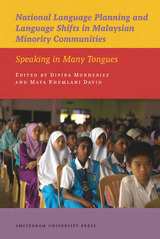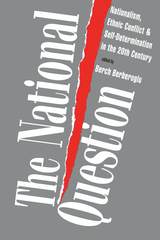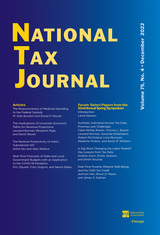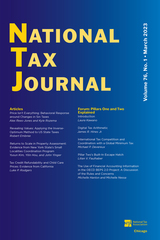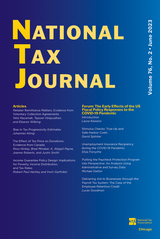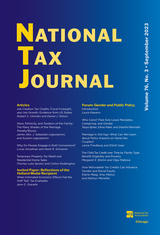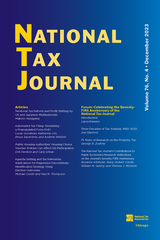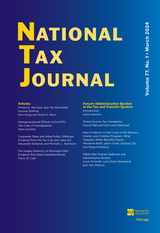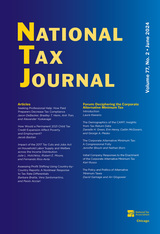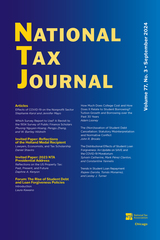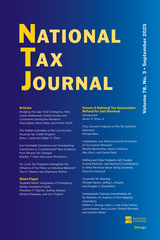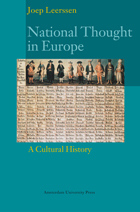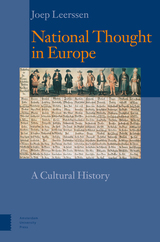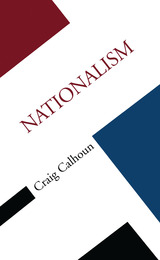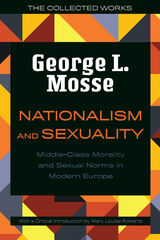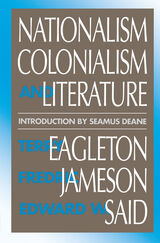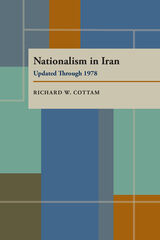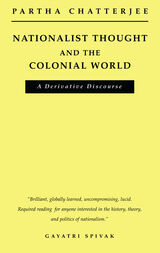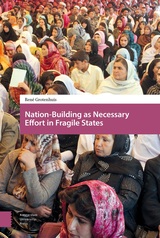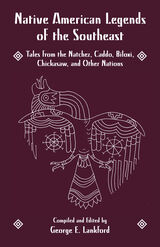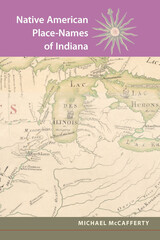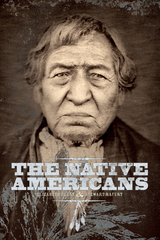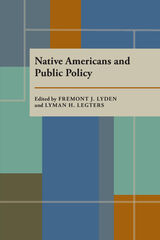 Nashville's New Americans: Tracing the Journeys of Our Immigrant Neighbors
Sheri Lea Sellmeyer
Vanderbilt University Press, 2026 Whether it’s building skyscrapers, running successful restaurants, researching diseases, performing music, cleaninghotel rooms, or holding public office, immigrants are changing Nashville from a mid‑size city known for its country music industry to an increasingly diverse, multicultural destination. In Metro Nashville schools today, students speak more than 120 languages. The city is bigger, more congested, and more expensive than it’s ever been, drawing criticism from both long‑time residents and newcomers. But growth has also brought top‑notch scientists and educators, a world‑class symphony, major league football, soccer and hockey teams, investment from major corporations — and a wide range of immigrants whose talent and hard work have helped make all of that happen.
Nashville’s New Americans provides a case study from one of the fastest growing cities in the country on the contributions immigrants are making to its culture and economy, profiling 39 immigrants from 38 countries in Asia, the Middle East, Africa, Europe, Latin America, and Australia.
Nasser
Anne Alexander
Haus Publishing, 2007 One of the young officers who overthrew King Farouq in 1952, Nasser was 36 years old when he became the undisputed leader of Egypt. In 1956 he nationalised the Suez Canal, braving the anger of Britain, France and war with Israel.
 Nasser
Anne Alexander
Haus Publishing, 2025 A nuanced portrait of one of the most complex figures of the Middle East, Gamal Abd al-Nasser.
More than fifty years after his death, Gamal Abd al-Nasser remains a towering figure in the Arab world. As one of the young officers who overthrew British-backed King Farouk in Egypt in 1952, Nasser rose to prominence as a charismatic visionary who challenged foreign dominance. At just thirty-six years old, he became the undisputed leader of Egypt in a presidency that would run from 1956 to 1970.
This insightful biography, in its second edition and featuring a new introduction from the author, delves into the life of Nasser, charting his rise to power, his nationalization of the Suez Canal, and his turbulent years as president. Many in the Arab World celebrate Nasser for his defiance of colonial rule and his dream of Arab unity. However, his legacy is not without its contradictions. Critics have alluded, for instance, to his autocratic rule and unfulfilled promises. In Nasser, Anne Alexander explores this tension between Nasser’s revolutionary ideas and the reality of his governance.
Natal Command
Peter Sacks
University of Chicago Press, 1997 Peter Sacks draws upon his life as an expatriate as well as upon his early years in South Africa, including his time spent in the military, to create a remarkably powerful book of poetry. At turns meditative and narrative, Sacks is unafraid to lay bare in vivid imagery his sense of both personal and historical losses, and his commitment to the works of mourning and of cultural repair. Even the love poems emerge from this book with the impress of both bittersweet aspiration and regret.
Natalia Shelikhova: Russian Oligarch of Alaska Commerce
Edited by Dawn Lea Black and Alexander Petrov
University of Alaska Press, 2010 This volume makes available for the first time in English a variety of primary source materials relating to the life and work of Natalia Shelikov, a pioneering nineteenth-century Russian-American businesswoman. As a principal of the Russian-American Company, Shelikov worked in Alaska, and her business acumen and wide-ranging connections—including the empress of Russia and a swathe of northern leaders—were crucial to the growth of Alaska’s economy, as well as to the welfare of the Native people, in whose life and culture she took a strong interest. The letters, petitions, and personal documents presented here will be indispensable for students of Alaska and nineteenth-century women’s history.
 Natalija: Life in the Balkan Powder Keg, 1880-1956
Natalija Matic-Zrnic
Central European University Press, 2009 The life story of a Serbian woman over a period of more than 70 years, preserved in memoirs, letters and mostly diaries, recounts the triumphs and tragedies of a life that takes place against the backdrop of extraordinary turbulence in the Balkans. It covers more than half a century, five wars (including the two world wars), and four ideologies. This is a time of excitement in Serbia as its leaders carve an independent state out of the Ottoman Empire and attempt to modernize a largely rural and “backward” corner of Europe. A time of opportunity for many who join in the effort to build the infrastructure of a modern economy, as well as the growing number of middle class families who send their children, in rare cases even girls, to the emerging system of state schools. Above all, a time of war, as the expanding Serbian state comes into conflict with its neighbors and, ultimately, the Great Powers of Europe. Accompanied by an introductory study, Natalija’s diary provides a rich background to understanding the on-going conflict in the Balkans today.
 Natch
Darrell Kinsey
University of Iowa Press, 2025 The Center for Fiction 2025 First Novel Prize, Shortlist
At the age of twenty-nine, tired of trying to get along with members of his crew and tired of the money going into somebody else’s pocket, Natch begins working for himself, climbing and cutting down trees in the foothills of north Georgia. He has his truck, ropes, climbing gear, and a rotating selection of secondhand saws he finds at pawn shops and flea markets. He is free to work as he pleases. And he believes he is fine with his life as it is, living alone in an old hunting cabin at the end of a dirt lane, enjoying his habits, exploring his vices, and living, as he puts it, “like some wild thing let loose on the world.”
Then he meets Asha, an alluring woman who works the nightshift at a convenience store. He finds himself needing her in a way that he has never needed anyone before. Among her charms are her passions for reading and belly dance and her ambition to put herself through school to become a therapist. She believes her studies will cure her of the familial dysfunctions she faced as a child and eventually enable her to help others.
When Asha discovers that she is expecting a child, the young couple struggles to convert the excitement of their early days together into a more steadfast companionship. Over the seasons of her pregnancy, Asha discovers that the freedom of their hardscrabble existence is overshadowed by the constant threat of misfortune and injury, and she finds herself timorous to bring a child into a setting where chainsaws are everywhere, where constant fires burn the bones of felled trees, a world of endless struggle in which finding more work means finding more danger.
 Natchiq Grows Up: The Story of an Alaska Ringed Seal Pup and Her Changing Home
Donna D.W. Hauser
University of Alaska Press, 2023 This is the story of Natchiq, the ringed seal pup, growing up in her snow cave on the sea ice in northern Alaska with her mom Siku. Interwoven with Indigenous Knowledge from Qikiktagruk Elders from northwest Alaska, Iñupiaq terms, and scientific findings, readers follow Natchiq’s daring escapes from predators and seal dogs specially trained to help biologists find ringed seals.
Beginning in the 1980s, scientists started traveling to northwest Alaska to research the lives of ringed seals, bringing Labrador retrievers who could sniff out seals and their snow cave homes (called lairs) on the sea ice. Decades later, scientists partnered with the Iñupiaq people of
Qikiktaġruk (Kotzebue) to learn more about ringed seals. They relied on a combination of Indigenous Knowledge and scientific techniques to capture and apply tags to understand the movements and behavior of ringed seals.
But the Arctic homes of ringed seals are changing, and the long history of ringed seal science in the Kotzebue Sound proved to be just the beginning of long and cooperative relationships melding science and Indigenous knowledge. During 2018 and 2019, with unprecedented sea ice conditions, Qikiktagrumiut Elders and scientists returned to the ice to measure changes in the habitat available for ringed seal pups in the region.
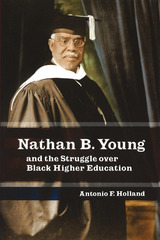 Nathan B. Young and the Struggle over Black Higher Education
Antonio F. Holland
University of Missouri Press, 2006 At the turn of the twentieth century, African Americans eager to improve their lives through higher education were confronted with the divergent points of view of two great leaders: Booker T. Washington advocated vocational training, while W. E. B. Du Bois stressed the importance of the liberal arts. Into the fray stepped Nathan B. Young, who, as Antonio Holland now tells, left a lasting mark on that debate.
Born in slavery in Alabama, Young followed a love of learning to degrees from Talladega and Oberlin Colleges and a career in higher education. Employed by Booker T. Washington in 1892, he served at Tuskegee Institute until conflict with Washington’s vocational orientation led him to move on. During a brief tenure at Georgia State Industrial College under Richard R. Wright, Sr., he became disillusioned by efforts of whites to limit black education to agriculture and the trades. Hired as president of Florida A&M in 1901, he fought for twenty years to balance agricultural/vocational education with the liberal arts, only to meet with opposition from state officials that led to his ouster.
This principled educator finally found his place as president of Lincoln University in Missouri in 1923. Here Young made a determined effort to establish the school as a standard institution of higher learning. Holland describes how he campaigned successfully to raise academic standards and gain accreditation for Lincoln’s programs—successes made possible by the political and economic support of farsighted members of Missouri’s black community.
Holland shows that the great debate over black higher education was carried on not only in the rhetoric of Washington and Du Bois but also on the campuses, as Young and others sought to prepare African American students to become thinkers and creators. In tracing Young’s career, Holland presents a wealth of information on the nature of the education provided for former slaves and their descendents in four states—shedding new light on the educational environment at Oberlin and Tuskegee—and on the actions of racist white government officials to limit the curriculum of public education for blacks.
Although Young’s efforts to improve the schools he served were often thwarted, Holland shows that he kept his vision alive in the black community. Holland’s meticulous reconstruction of an eventful career provides an important look at the forces that shaped and confounded the development of black higher education during traumatic times.
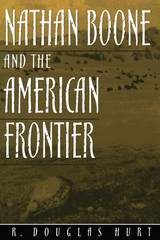 Nathan Boone and the American Frontier
R. Douglas Hurt
University of Missouri Press, 2000 Celebrated as one of America's frontier heroes, Daniel Boone left a legacy that made the Boone name almost synonymous with frontier settlement. Nathan Boone, the youngest of Daniel's sons, played a vital role in American pioneering, following in much the same steps as his famous father. In Nathan Boone and the American Frontier, R. Douglas Hurt presents for the first time the life of this important frontiersman. Based on primary collections, newspaper articles, government documents, and secondary sources, this well-crafted biography begins with Nathan's childhood in present-day Kentucky and Virginia and then follows his family's move to Missouri. Hurt traces Boone's early activities as a hunter, trapper, and surveyor, as well as his leadership of a company of rangers during the War of 1812. After the war, Boone returned to survey work. In 1831, he organized another company of rangers for the Black Hawk War and returned to military life, making it his career. The remainder of the book recounts Boone's activities with the army in Iowa and the Indian Territory, where he was the first Boone to gain notice outside Missouri or Kentucky. Even today his work is recognized in the form of state parks, buildings, and place-names. Although Nathan Boone was an important figure, he lived much of his life in the shadow of his father. R. Douglas Hurt, however, makes a strong case for Nathan's contribution to the larger context of life in the American backcountry, especially the execution of military and Indian policy and the settlement of the frontier. By recognizing the significant role that Nathan Boone played, Nathan Boone and the American Frontier also provides the recognition due the many unheralded frontiersmen who helped settle the West. Anyone with an interest in the history of Missouri, the frontier, or the Boone name will find this book informative and compelling.
 Nathan Hale: The Life and Death of America's First Spy
M. William Phelps
University Press of New England, 2015 Although famous for his purported last words—“I only regret that I have but one life to lose for my country”—few people know the real Nathan Hale. M. William Phelps brings into focus the life of this famed patriot and first spy of the American Revolution, charting Hale’s rural childhood, his education at Yale, and his work as a schoolteacher. Like many young Americans, he was soon drawn into the colonies’ war for independence and became a captain in Washington’s army. When the general was in need of a spy, Hale willingly rose to the challenge, gathering intelligence behind British lines on Long Island, and in the end bravely sacrificing his life for the sake of American liberty. Using Hale’s own journals and letters as well as testimonies from his friends and contemporaries, Phelps depicts the Revolution as it was seen from the ground. From the confrontation in Boston to the battle for New York City, readers experience what life was like for an ordinary soldier in the struggling Continental Army. In this impressive, well-researched biography, Phelps separates historical fact from long-standing myth to reveal the truth about Nathan Hale, a young man who deserves to be remembered as an original American patriot.
Nathanael West: An Interpretive Study
James F. Light
Northwestern University Press, 1971 This study of the novels of Nathanael West begins with the important threads of West’s life and their relationship to his works. James F. Light gives a detailed analysis of each of West's novels, investigating in particular the works' treatment of social criticism and manipulation of dream and symbol.
Nathaniel Hawthorne: The English Experience, 1853-1864
Raymona Hull
University of Pittsburgh Press, 1980
In 1853, when he was forty-nine and at the height of his literary career, Nathaniel Hawthorne accepted the post of U.S. consul at Liverpool, England, as a reward for writing the campaign biography of his college friend President Franklin Pierce. Hawthorne’s departure for Europe marked a turning point in his life. While Our Old Home, shrewd essays on his observations in England, The Marble Faun, a romance set in Italy, and the English Notebooks and French and Italian Notebooks were all results of his European residence, he returned to Concord in 1860 frustrated, depressed, and sick. He died in 1864.
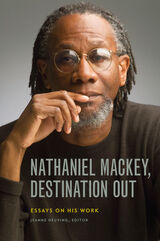 Nathaniel Mackey, Destination Out: Essays on His Work
Jeanne Heuving
University of Iowa Press, 2021 In this first book of essays devoted entirely to Nathaniel Mackey’s work, prominent critics respond to a major oeuvre that is at once affirmative and utopic, negational and dystopic. Drawing on multiple genealogies and traditions, primarily from African and African diaspora histories and cultures, Mackey’s work envisions cultural creation as cross-cultural, based in the damaging relationships of Africans brought against their will to the Americas and the resulting innovations of New World African literatures and music.
This collection is organized through broad topics in order to provide entrances into his challenging work: myth, literature, and seriality; music, performance, and collaboration; syncretism, synopsis, and what-saying. It engages Mackey’s spiritual and esoteric disposition along with his attention to what Amiri Baraka called the “enraged sociologies” of Black music. In his manifesto “Destination Out,” Mackey describes his work as “wanting to bid all givens goodbye” and as “centrifugal.” It is also centripetal, manifesting a reflexive interiority that creates itself through recurring forms.
Contributors: Maria Damon, Joseph Donahue, Rachel Blau DuPlessis, Norman Finkelstein, Luke Harley, Paul Jaussen, Adalaide Morris, Fred Moten, Peter O’Leary, Anthony Reed
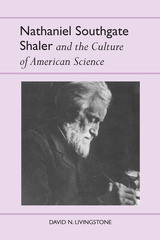 Nathaniel Southgate Shaler and the Culture of American Science
David N. Livingstone
University of Alabama Press, 1987 An influential American scientist and educator. Nathaniel Southgate Shaler and the Culture of American Science is the first book-length study of the man who served a Harvard’s Professor of Geology and Paleontology during the Darwinian era. Shaler was a student of Louis Agassiz and went on to a successful, multifaceted career as a geologist, geographer, educator, humanist, and poet. Livingstone employs a thematic approach to chart Shaler’s career against the broader intellectual currents of America’s Gilded Age. After tracing Shaler’s life story from his boyhood in Kentucky through his student years at Harvard, his service with the Geological Survey, and eventually his years as Dean of Harvard’s Lawrence Scientific School, the author examines Shaler’s evolutionary vision and portrays his strategic efforts to reconcile the nineteenth century’s scientific and religious world views. Livingstone assesses Shaler’s prolific writings, including those on race, which demonstrate a typical concern to provide a “scientific” perspective on the political questions of immigration restriction and eugenic control. IN addition, the book explores his efforts to interweave geography and history, particularly in relation to the American frontier; and his contributions to geology and geomorphology. The portrait of Shaler is completed with a review of his educational thinking and his role in establishing the American Summer School and in furthering scientific and technological education. Nathaniel Southgate Shaler emerges from Livingstone’s work as a distinctive figure in the development of the new scientific culture, a figure who provides a focal point for assessing the impact of evolutionary naturalism on late-nineteenth-century American thought.
 Nation and Migration: How Citizens in Europe Are Coping with Xenophobia
György Csepeli
Central European University Press, 2021 Nation and Migration provides a way to understand recent migration events in Europe that have attracted the world's attention. The emergence of the nations in the West promised homogenization, but instead the imagined national communities have everywhere become places of heterogeneity, and modern nation states have been haunted by the specter of minorities. This study analyses experiences relating to migration in 23 European countries. It is based on data from the International Social Survey Programme, a global cross-national collaborative exercise, with surveys made in 1995, 2003, and 2013. In the authors' view, a critical test for Europe will be its ability to find adequate responses to the challenges of globalization. The book provides a detailed overview of how citizens in Europe are coping with a xenophobia fueled by their own sense of insecurity. The authors reconstruct the competing sociological reactions to migration in the forms of integration, assimilation and segregation. Hungary receives special attention: the data show that people living there are far less closed and xenophobic than they might seem through the prism of a media-instigated moral panic.
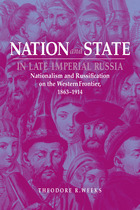 Nation and State in Late Imperial Russia: Nationalism and Russification on the Western Frontier, 1863-1914
Theodore R. Weeks
Northern Illinois University Press, 2008
If one were to pick a single explanation for the fall of the tsarist and Soviet empires, it might well be Russia's inability to achieve a satisfactory relationship with non-Russian nationalities. Perhaps no other region demonstrates imperial Russia's "national dilemma" better than the western provinces and Kingdom of Poland, an extensive area inhabited by a diverse group of nationalities, including Poles, Jews, Ukrainians, Belorussians, Russians, and Lithuanians. Taking an in-depth look at this region during an era of intensifying national feeling, Weeks shows that the Russian government, even at the height of its empire, never came to terms with the question of nationality.
Drawing upon little-known Russian and Polish archives, Weeks challenges widely held assumptions about the "national policy" of late imperial Russia and provides fresh insights into ethnicity in Russia and the former Soviet Union. He demonstrates that, rather than pursuing a plan of "russification," the tsarist government reacted to situations and failed to initiate policy.
In spite of the Russians' great distrust of certain minority nationalities—especially Jews and Poles—the ruling elite was equally uncomfortable with the modern nationalism, even in its Russian form. Weeks demonstrates Russia's unwillingness (or inability) to use nationalistic policies to save the empire by examining its dilatory and contradictory actions regarding efforts to institute reforms in the western lands.
 The Nation and the States, Rivals or Partners
William Anderson
University of Minnesota Press, 1955 The Nation and the States, Rivals or Partners was first published in 1955. Minnesota Archive Editions uses digital technology to make long-unavailable books once again accessible, and are published unaltered from the original University of Minnesota Press editions. Are the states losing their self-government? What did the framers of the Constitution intend with respect to states' rights? Are federal grants-in-aid to the states a boon or a bane? Is big government too big? Are overlapping taxes a necessary evil? These are the kinds of questions -- basic, complex, and difficult yet essential to answer -- that Professor Anderson clarifies in this handbook, which is intended for general readers as well as for students of government. The language has been kept simple and clear, and the viewpoint does not presuppose any extensive knowledge of the subject on the part of the reader. As a member of the President's Commission on Intergovernmental Relations, Professor Anderson has recognized a real need on the part of the public for a better understanding of the background issues involved in any discussion of the balance of authority, functions, and finances between the nation, the states, and the local governments of America. This book will help responsible citizens, government officials, and students of political science, history, and other social sciences to reach informed decisions on the merits of any proposals for readjustments in intergovernmental relations. After providing the historical background for the subject and scrutinizing the current issues in fact as well as in propaganda, Professor Anderson presents a constructive program designed for the strengthening of all three levels of American government.
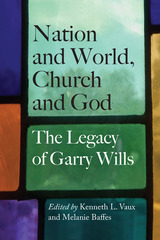 Nation and World, Church and God: The Legacy of Garry Wills
Edited by Kenneth L. Vaux and Melanie Baffes
Northwestern University Press, 2014 Garry Wills is the polymathic public intellectual bemoaned as missing from American letters. A professor emeritus at Northwestern University, he has built upon his early studies in classics and patristics, while bringing his considerable intellect to bear on American culture, politics, and religion, notably through provocative articles and books on wars, past and present presidents, and the Catholic Church Wills has distinguished himself in the crowded field of Civil War history; fearlessly taken on the legacies of Richard Nixon and Ronald Reagan, among other presidents; and offered a critical voice in many fraught ethical discussions, especially in the areas of war and peace. Nation and World, Church and God gathers original critical reflections by leading writers and scholars on Garry Wills’s life work. Organized around the themes of “Classics,” “Civil War,” “War and Peace,” and “Theology, Church, and the Arts,” the book reflects the cultural acumen, fine-grained political analysis, ethical candor, and theological wisdom of one of America’s most prolific writers.
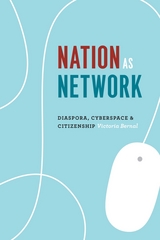 Nation as Network: Diaspora, Cyberspace, and Citizenship
Victoria Bernal
University of Chicago Press, 2014 How is the internet transforming the relationships between citizens and states? What happens to politics when international migration is coupled with digital media, making it easy for people to be politically active in a nation from outside its borders? In Nation as Network, Victoria Bernal creatively combines media studies, ethnography, and African studies to explore this new political paradigm through a striking analysis of how Eritreans in diaspora have used the internet to shape the course of Eritrean history.
Bernal argues that Benedict Anderson’s famous concept of nations as “imagined communities” must now be rethought because diasporas and information technologies have transformed the ways nations are sustained and challenged. She traces the development of Eritrean diaspora websites over two turbulent decades that saw the Eritrean state grow ever more tyrannical. Through Eritreans’ own words in posts and debates, she reveals how new subjectivities are formed and political action is galvanized online. She suggests that “infopolitics”—struggles over the management of information—make politics in the 21st century distinct, and she analyzes the innovative ways Eritreans deploy the internet to support and subvert state power. Nation as Network is a unique and compelling work that advances our understanding of the political significance of digital media.
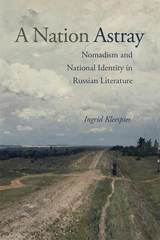 A Nation Astray: Nomadism and National Identity in Russian Literature
Ingrid Anne Kleespies
Northern Illinois University Press, 2012
The metaphor of the nomad may at first seem surprising for Russia given its history of serfdom, travel restrictions, and strict social hierarchy. But as the imperial center struggled to tame a vast territory with ever-expanding borders, ideas of mobility, motion, travel, wandering, and homelessness came to constitute important elements in the discourse about national identity. For Russians of the nineteenth century national identity was anything but stable.
This rootlessness is at the core of A Nation Astray. Here, Ingrid Anne Kleespies traces the image of the nomad and its relationship to Russian national identity through the debates and discussion of literary works by seminal writers like Karamzin, Pushkin, Chaadaev, Goncharov, and Dostoevsky. Appealing to students of Russian Romanticism, nationhood, and identity, as well as general readers interested in exile and displacement as elements of the human condition, this interdisciplinary work illuminates the historical and philosophical underpinnings of a basic aspect of Russian self-determination: the nomadic constitution of the Russian nation.
A Nation at Work: The Heldrich Guide to the American Workforce
Van Horn, Carl E
Rutgers University Press, 2003 In the United States work underlies our very concept of who we are. Changes in society and technology have influenced how and where we work, and transformations within the workplace in turn have altered our society.
A Nation at Work addresses the fundamental economic, demographic, policy, and business facts about how the workforce and workplace are changing in the early twenty-first century. Illustrated with over thirty-five graphs, Part I covers essential topics about the American workforce and workers. Part II gathers essays and speeches from the nation's outstanding journalists and workplace analysts. The book incorporates facts and data, including invaluable tables and listings for useful Internet sites, books, and organizations.
Comprehensive in scope, A Nation at Work will help readers reach a better understanding about their own work and the world of work around them.
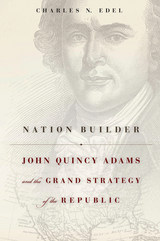 Nation Builder: John Quincy Adams and the Grand Strategy of the Republic
Charles N. Edel
Harvard University Press, 2014 “America goes not abroad, in search of monsters to destroy”—John Quincy Adams’s famous words are often quoted to justify noninterference in other nations’ affairs. Yet when he spoke them, Adams was not advocating neutrality or passivity but rather outlining a national policy that balanced democratic idealism with a pragmatic understanding of the young republic’s capabilities and limitations. America’s rise from a confederation of revolutionary colonies to a world power is often treated as inevitable, but Charles N. Edel’s provocative biography of Adams argues that he served as the central architect of a grand strategy that shaped America’s rise. Adams’s particular combination of ideas and policies made him a critical link between the founding generation and the Civil War–era nation of Lincoln.
Examining Adams’s service as senator, diplomat, secretary of state, president, and congressman, Edel’s study of this extraordinary figure reveals a brilliant but stubborn man who was both visionary prophet and hard-nosed politician. Adams’s ambitions on behalf of America’s interests, combined with a shrewd understanding of how to counter the threats arrayed against them, allowed him to craft a multitiered policy to insulate the nation from European quarrels, expand U.S. territory, harness natural resources, develop domestic infrastructure, education, and commerce, and transform the United States into a model of progress and liberty respected throughout the world.
While Adams did not live to see all of his strategy fulfilled, his vision shaped the nation’s agenda for decades afterward and continues to resonate as America pursues its place in the twenty-first-century world.
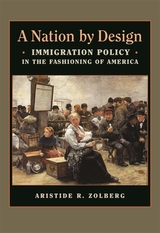 A Nation by Design: Immigration Policy in the Fashioning of America
Aristide R. Zolberg
Harvard University Press, 2006 According to the national mythology, the United States has long opened its doors to people from across the globe, providing a port in a storm and opportunity for any who seek it. Yet the history of immigration to the United States is far different. Even before the xenophobic reaction against European and Asian immigrants in the late nineteenth century, social and economic interest groups worked to manipulate immigration policy to serve their needs. In A Nation by Design, Aristide Zolberg explores American immigration policy from the colonial period to the present, discussing how it has been used as a tool of nation building.
A Nation by Design argues that the engineering of immigration policy has been prevalent since early American history. However, it has gone largely unnoticed since it took place primarily on the local and state levels, owing to constitutional limits on federal power during the slavery era. Zolberg profiles the vacillating currents of opinion on immigration throughout American history, examining separately the roles played by business interests, labor unions, ethnic lobbies, and nativist ideologues in shaping policy. He then examines how three different types of migration--legal migration, illegal migration to fill low-wage jobs, and asylum-seeking--are shaping contemporary arguments over immigration to the United States.
A Nation by Design is a thorough, authoritative account of American immigration history and the political and social factors that brought it about. With rich detail and impeccable scholarship, Zolberg's book shows how America has struggled to shape the immigration process to construct the kind of population it desires.
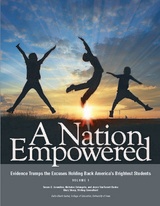 A Nation Empowered, Volume 1: Evidence Trumps the Excuses Holding Back America's Brightest Students
Susan G. Assouline, Nicholas Colangelo, Joyce VanTassel-Baska, Mary Sharp
University of Iowa Press, 2015 This new report, A Nation Empowered: Evidence Trumps the Excuses Holding Back America's Brightest Students builds on the momentum of the 2004 report, A Nation Deceived: How Schools Hold Back America's Brightest Students. A Nation Deceived initiated a critical dialogue about academic acceleration, an under-used intervention. A Nation Deceived exposed to the nation the inconsistencies between research and practice and brought acceleration to prominence in the field.
Volume 1 and 2 of A Nation Empowered: Evidence Trumps the Excuses Holding Back America's Brightest Students equips students, families, and educators with facts to refute biased excuses. A Nation Empowered shifts the impetus from conversation to action. Empowerement galvanizes determination with evidence. Volume 1 portrays the determination of students, educators, and parents to strive for excellence. Volume 2 reveals the evidence that trumps the excuses that hold bright students back.
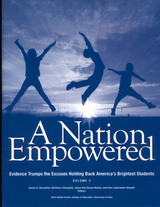 A Nation Empowered, Volume 2: Evidence Trumps the Excuses Holding Back America's Brightest Students
Susan G. Assouline, Nicholas Colangelo, Joyce VanTassel-Baska, and Ann Lupkowski-Shoplik
University of Iowa Press, 2015 This new report, A Nation Empowered: Evidence Trumps the Excuses Holding Back America's Brightest Students builds on the momentum of the 2004 report, A Nation Deceived: How Schools Hold Back America's Brightest Students. A Nation Deceived initiated a critical dialogue about academic acceleration, an under-used intervention. A Nation Deceived exposed to the nation the inconsistencies between research and practice and brought acceleration to prominence in the field.
Volume 1 and 2 of A Nation Empowered: Evidence Trumps the Excuses Holding Back America's Brightest Students equips students, families, and educators with facts to refute biased excuses. A Nation Empowered shifts the impetus from conversation to action. Empowerement galvanizes determination with evidence. Volume 1 portrays the determination of students, educators, and parents to strive for excellence. Volume 2 reveals the evidence that trumps the excuses that hold bright students back.
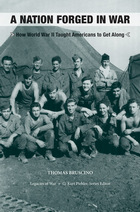 A Nation Forged in War: How World War II Taught Americans to Get Along
Thomas A. Bruscino
University of Tennessee Press, 2014
World War II shaped the United States in profound ways, and this new book—the first in the Legacies of War series—explores one of the most significant changes it fostered: a dramatic increase in ethnic and religious tolerance. A Nation Forged in War is the first full-length study of how large-scale mobilization during the Second World War helped to dissolve longstanding differences among White soldiers of widely divergent backgrounds.
Never before or since have so many Americans served in the armed forces at one time: more than 15 million donned uniforms in the period from 1941 to 1945. Thomas Bruscino explores how these soldiers' shared experiences—enduring basic training, living far from home, engaging in combat—transformed their views of other ethnic groups and religious traditions. He further examines how specific military policies and practices worked to counteract old prejudices, and he makes a persuasive case that throwing together men of different regions, ethnicities, religions, and classes not only fostered a greater sense of tolerance but also forged a new American identity. When soldiers returned home after the war with these new attitudes, they helped reorder what it meant to be white in America.
Using the presidential campaigns of Al Smith in 1928 and John F. Kennedy in 1960 as bookend events, Bruscino notes a key change in religious bias. Smith's defeat came at the end of a campaign rife with anti-Catholic sentiment; Kennedy's victory some three decades later proved that such religious bigotry was no longer an insurmountable obstacle. Despite such advances, Bruscino notes that the growing broad-mindedness produced by the war had limits: it did not extend to African Americans, whose own struggle for equality would dramatically mark the postwar decades.
Extensively documented, A Nation Forged in War is one of the few books on the social and cultural impact of the World War II years. Scholars and students of military, ethnic, social, and religious history will be fascinated by this groundbreaking new volume.
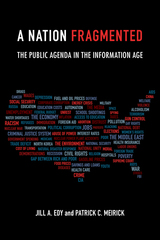 A Nation Fragmented: The Public Agenda in the Information Age
Jill Edy
Temple University Press, 2019 The transformation from an undifferentiated public to a surfeit of interest groups has become yet another distinguishing feature of the increasing polarization of American politics. Jill Edy and Patrick Meirick contend that the media has played a key role in this splintering. A Nation Fragmented reveals how the content and character of the public agenda has transformed as the media environment evolved from network television and daily newspapers in the late 1960s to today’s saturated social media world with 200 cable channels. The authors seek to understand what happened as the public’s sense of shared priorities deteriorated. They consider to what extent our public agenda has “fallen apart” as attention to news has declined, and to what extent we have been “driven apart” by changes in the issue agendas of news. Edy and Meirick also show how public attention is limited and spread too thin except in cases where a highly consistent news agenda can provoke a more focused public agenda. A Nation Fragmented explores the media’s influence and political power and, ultimately, how contemporary democracy works.
Nation, Language, Islam: Tatarstan's Sovereignty Movement
Helen M. Faller
Central European University Press, 2011 A detailed academic treatise of the history of nationality in Tatarstan. The book demonstrates how state collapse and national revival influenced the divergence of worldviews among ex-Soviet people in Tatarstan, where a political movement for sovereignty (1986-2000) had significant social effects, most saliently, by increasing the domains where people speak the Tatar language and circulating ideas associated with Tatar culture. Also addresses the question of how Russian Muslims experience quotidian life in the post-Soviet period. The only book-length ethnography in English on Tatars, Russia’s second most populous nation, and also the largest Muslim community in the Federation, offers a major contribution to our understanding of how and why nations form and how and why they matter – and the limits of their influence, in the Tatar case.
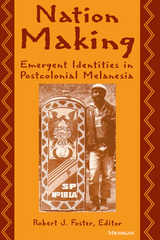 Nation Making: Emergent Identities in Postcolonial Melanesia
Robert J. Foster, Editor
University of Michigan Press, 1997
In this theoretically sophisticated volume, contributors examine the process of nation making in Fiji, Papua New Guinea, the Solomon Islands, and Vanuatu- states that attained formal political independence between 1970 and 1980. The remarkable cultural diversity within these states demands close ethnographic study of different groups and their contesting definitions of nationhood and leads to highly original approaches.
The essays explore the political conditions and cultural assumptions that inform how Melanesians variously imagine a national community. The authors interpret a wide range of materials, from political speeches and official ceremonies of state to newspaper advertisements and life crisis rites. They demonstrate both how the legacies of divisive colonial rule, the weakness of the postcolonial state, and the exigencies of capitalist markets undermine the processes of nation making in contemporary Melanesia and how new forms of popular and consumer culture potentially shape an emergent national consciousness.
Comparative and historical in its orientation, this book will appeal to readers not only in anthropology but in political science, social history, and cultural studies. It will be of special value to those interested in comparative politics and history, Pacific studies, ethnicity and nationalism, and colonial and postcolonial studies.
Robert J. Foster is Assistant Professor of Anthropology, University of Rochester.
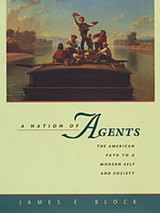 A Nation of Agents: The American Path to a Modern Self and Society
James E. Block
Harvard University Press, 2002 In this sweeping reinterpretation of American political culture, James Block offers a new perspective on the formation of the modern American self and society. Block roots both self and society in the concept of agency, rather than liberty, and dispenses with the national myth of the "sacred cause of liberty"--with the Declaration of Independence as its "American scripture." Instead, he recovers the early modern conception of agency as the true synthesis emerging from America's Protestant and liberal cultural foundations.
Block traces agency doctrine from its pre-Commonwealth English origins through its development into the American mainstream culture on the eve of the twentieth century. The concept of agency that prevailed in the colonies simultaneously released individuals from traditional constraints to participate actively and self-reliantly in social institutions, while confining them within a new set of commitments. Individual initiative was now firmly bounded by the modern values and ends of personal Protestant religiosity and collective liberal institutional authority. As Block shows, this complex relation of self to society lies at the root of the American character.
A Nation of Agents is a new reading of what the "first new nation" did and did not achieve. It will enable us to move beyond long-standing national myths and grasp both the American achievement and its legacy for modernity.
A Nation of Behavers
Martin E. Marty
University of Chicago Press, 1980 "National Book Award-winning author and historian Martin E. Marty's A Nation of Behavers is a characteristically perceptive new map of American religion. . . . Marty's years of astute observation of America's religious trends and developments have yielded six informal but clearly defined clusters around which people attempt to find not only basic group identity but also some kind of power. Anyone concerned about belief and its manifestations will be immensely aided by Marty's cogent comments on recent religious happenings."—Commonweal
"This is a book for everyone, more than for the scholar of American religion. . . . Its value is in breadth of vision and new interpretation."—Dean R. Hoge, Theology Today
"As a means of making sense out of the potpourri of competing groups that compose religious America today, A Nation of Behavers is a first-rate tool."—Edward A. Fiske, New York Times
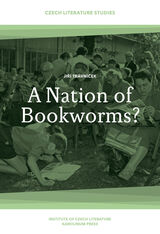 A Nation of Bookworms?: Czechs as Readers
Jirí Trávnícek
Karolinum Press, 2021 Nation of Bookworms takes an in-depth look at the reading culture of the Czech Republic--the country with the highest number of libraries per capita worldwide. Drawing on studies and oral interviews of Czech readers conducted by the National Library of the Czech Republic and the Institute of Czech Literature between 2007 and 2018, the book presents intriguing new research on Czech readership and society. Jiří Trávníček deftly sifts through hard data and first-person reportage, illuminating the myriad components that make up reading culture, such as print-reading, screen-reading, libraries, book sales, the social lives of readers, time spent reading, and reading preferences. Trávníček also takes a global look at literary love, exploring the parallels between the reading cultures of other countries and the Czechs’ unique fervor for the written word. Nation of Bookworms is essential reading for bibliophiles on every continent.
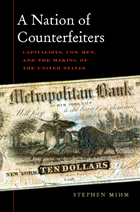 A Nation of Counterfeiters: Capitalists, Con Men, and the Making of the United States
Stephen Mihm
Harvard University Press, 2007 Listen to a short interview with Stephen MihmHost: Chris Gondek | Producer: Heron & Crane
Few of us question the slips of green paper that come and go in our purses, pockets, and wallets. Yet confidence in the money supply is a recent phenomenon: prior to the Civil War, the United States did not have a single, national currency. Instead, countless banks issued paper money in a bewildering variety of denominations and designs--more than ten thousand different kinds by 1860. Counterfeiters flourished amid this anarchy, putting vast quantities of bogus bills into circulation.
Their success, Stephen Mihm reveals, is more than an entertaining tale of criminal enterprise: it is the story of the rise of a country defined by a freewheeling brand of capitalism over which the federal government exercised little control. It was an era when responsibility for the country's currency remained in the hands of capitalists for whom "making money" was as much a literal as a figurative undertaking.
Mihm's witty tale brims with colorful characters: shady bankers, corrupt cops, charismatic criminals, and brilliant engravers. Based on prodigious research, it ranges far and wide, from New York City's criminal underworld to the gold fields of California and the battlefields of the Civil War. We learn how the federal government issued greenbacks for the first time and began dismantling the older monetary system and the counterfeit economy it sustained.
A Nation of Counterfeiters is a trailblazing work of history, one that casts the country's capitalist roots in a startling new light. Readers will recognize the same get-rich-quick spirit that lives on in the speculative bubbles and confidence games of the twenty-first century.
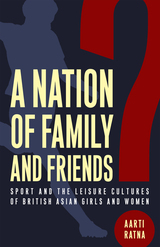 A Nation of Family and Friends?: Sport and the Leisure Cultures of British Asian Girls and Women
Aarti Ratna
Rutgers University Press, 2024 In A Nation of Family and Friends, sociologist Aarti Ratna examines the complex and dynamic relationships between South Asian women and sporting and leisure cultures. Mining autobiographical insights (as a South Asian scholar living in the UK) she links the chapters of this innovative book using the sociological concepts of family and friends, particularly as they relate to an analysis of wider debates about the complexities of race, gender, and the nation. Ratna underscores the importance of studying informal spaces of sport and leisure as friendly, familial, sociable, and political spaces. She simultaneously highlights the role of earlier sociological research in disseminating myths about South Asian women as too physically weak to play competitive sports; culturally passive victims of South Asian cultures and religions; and as sexually exotic women requiring saving through colonial and imperial projects led by white men and women.
Ratna also examines two key cultural objects - the popular films "Bend it Like Beckham" and “Dhan Dhana Dhan Goal” - to examine in detail the gendered representation of South Asian soccer players’ engagement in amateur and elite levels of the sport. She critiques studies of women’s football fandom and sport that fail to acknowledge social differences relating to race, class, age, disability, and sexuality. By linking the social forces (across time and space) that differentially affect their sporting choices and leisure lifestyles, Ratna portrays the women of the South Asian diaspora as active agents in the shaping of their life courses and as skilled navigators of the complexities affecting their own identities. Ultimately Ratna examines the intersections of class, caste, age, generation, gender, and sexuality, to provide a rich and critical exploration of British Asian women's sport and leisure choices, pleasures, and lived realities.
A Nation of Fliers: German Aviation and the Popular Imagination
Peter Fritzsche
Harvard University Press, 1992 From huge, fragile airships hanging in the sky to dashing young war pilots obsessed with death and destruction, this text describes Germany’s perilous romance with aviation, covering the bright idealism of flight and its darker service in total war.
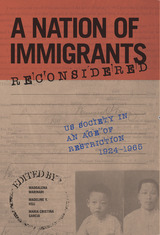 A Nation of Immigrants Reconsidered: US Society in an Age of Restriction, 1924-1965
Maddalena Marinari, Madeline Hsu, Maria Garcia
University of Illinois Press, 2019 Scholars, journalists, and policymakers have long argued that the 1965 Immigration and Nationality Act dramatically reshaped the demographic composition of the United States. In A Nation of Immigrants Reconsidered, leading scholars of immigration explore how the political and ideological struggles of the "age of restriction"--from 1924 to 1965--paved the way for the changes to come. The essays examine how geopolitics, civil rights, perceptions of America's role as a humanitarian sanctuary, and economic priorities led government officials to facilitate the entrance of specific immigrant groups, thereby establishing the legal precedents for future policies. Eye-opening articles discuss Japanese war brides and changing views of miscegenation, the recruitment of former Nazi scientists, a temporary workers program with Japanese immigrants, the emotional separation of Mexican immigrant families, Puerto Rican youth’s efforts to claim an American identity, and the restaurant raids of conscripted Chinese sailors during World War II. Contributors: Eiichiro Azuma, David Cook-Martín, David FitzGerald, Monique Laney, Heather Lee, Kathleen López, Laura Madokoro, Ronald L. Mize, Arissa H. Oh, Ana Elizabeth Rosas, Lorrin Thomas, Ruth Ellen Wasem, and Elliott Young
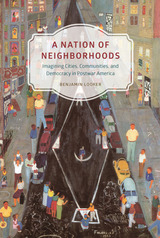 A Nation of Neighborhoods: Imagining Cities, Communities, and Democracy in Postwar America
Benjamin Looker
University of Chicago Press, 2015 Despite the pundits who have written its epitaph and the latter-day refugees who have fled its confines for the half-acre suburban estate, the city neighborhood has endured as an idea central to American culture. In A Nation of Neighborhoods, Benjamin Looker presents us with the city neighborhood as both an endless problem and a possibility.
Looker investigates the cultural, social, and political complexities of the idea of “neighborhood” in postwar America and how Americans grappled with vast changes in their urban spaces from World War II to the Reagan era. In the face of urban decline, competing visions of the city neighborhood’s significance and purpose became proxies for broader debates over the meaning and limits of American democracy. By studying the way these contests unfolded across a startling variety of genres—Broadway shows, radio plays, urban ethnographies, real estate documents, and even children’s programming—Looker shows that the neighborhood ideal has functioned as a central symbolic site for advancing and debating theories about American national identity and democratic practice.
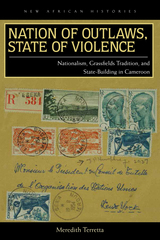 Nation of Outlaws, State of Violence: Nationalism, Grassfields Tradition, and State Building in Cameroon
Meredith Terretta
Ohio University Press, 2014 Nation of Outlaws, State of Violence is the first extensive history of Cameroonian nationalism to consider the global and local influences that shaped the movement within the French and British Cameroons and beyond. Drawing on the archives of the United Nations, France, Great Britain, Ghana, and Cameroon, as well as oral sources, Nation of Outlaws, State of Violence chronicles the spread of the Union des populations du Cameroun (UPC) nationalist movement from the late 1940s into the first postcolonial decade. It shows how, in the French and British Cameroon territories administered as UN Trusteeships after the Second World War, notions of international human rights, the promise of Third World independence, Pan-African federation, and national citizenship blended with local political and spiritual practices that resurfaced as the period of European rule came to a close. After French and British administrators banned the party in the mid-1950s, UPC nationalists adopted violence as a revolutionary strategy. In the 1960s, the nationalist vision disintegrated. The postcolonial regime labeled UPC nationalists “outlaws” and rounded them up for imprisonment or execution as the state shifted to single-party rule in 1966. Nation of Outlaws, State of Violence traces the connection between local and transregional politics in the age of Africa’s decolonization and the early decades of the Cold War. Rather than stop at official independence as most conventional histories of African nationalist movements do, this book considers postindependence events as crucial to the history of Cameroonian nationalism and to an understanding of the postcolonial government that came to power on 1 January 1960. While the history of the UPC is a story that ends with the party’s failure to gain access to political power with independence, it is also a story of the postcolonial state’s failure to become a nation.
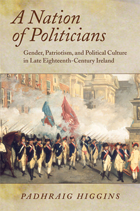 A Nation of Politicians: Gender, Patriotism, and Political Culture in Late Eighteenth-Century Ireland
Padhraig Higgins
University of Wisconsin Press, 2009 Between the years 1778 and 1784, groups that had previously been excluded from the Irish political sphere—women, Catholics, lower-class Protestants, farmers, shopkeepers, and other members of the laboring and agrarian classes—began to imagine themselves as civil subjects with a stake in matters of the state. This politicization of non-elites was largely driven by the Volunteers, a local militia force that emerged in Ireland as British troops were called away to the American War of Independence. With remarkable speed, the Volunteers challenged central features of British imperial rule over Ireland and helped citizens express a new Irish national identity.
In A Nation of Politicians, Padhraig Higgins argues that the development of Volunteer-initiated activities—associating, petitioning, subscribing, shopping, and attending celebrations—expanded the scope of political participation. Using a wide range of literary, archival, and visual sources, Higgins examines how ubiquitous forms of communication—sermons, songs and ballads, handbills, toasts, graffiti, theater, rumors, and gossip—encouraged ordinary Irish citizens to engage in the politics of a more inclusive society and consider the broader questions of civil liberties and the British Empire. A Nation of Politicians presents a fascinating tale of the beginnings of Ireland’s richly vocal political tradition at this important intersection of cultural, intellectual, social, and public history. Winner of the Donald Murphy Prize for Distinguished First Book, American Conference for Irish Studies
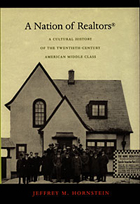 A Nation of Realtors®: A Cultural History of the Twentieth-Century American Middle Class
Jeffrey M. Hornstein
Duke University Press, 2005 How is it that in the twentieth century virtually all Americans came to think of themselves as “middle class”? In this cultural history of real estate brokerage, Jeffrey M. Hornstein argues that the rise of the Realtors as dealers in both domestic space and the ideology of home ownership provides tremendous insight into this critical question. At the dawn of the twentieth century, a group of prominent real estate brokers attempted to transform their occupation into a profession. Drawing on traditional notions of the learned professions, they developed a new identity—the professional entrepreneur—and a brand name, “Realtor.” The Realtors worked doggedly to make home ownership a central element of what became known as the “American dream.” Hornstein analyzes the internal evolution of the occupation, particularly the gender dynamics culminating in the rise of women brokers to predominance after the Second World War. At the same time, he examines the ways organized real estate brokers influenced American housing policy throughout the century. Hornstein draws on trade journals, government documents on housing policy, material from the archives of the National Association of Realtors and local real estate boards, demographic data, and fictional accounts of real estate agents. He chronicles the early efforts of real estate brokers to establish their profession by creating local and national boards, business practices, ethical codes, and educational programs and by working to influence laws from local zoning ordinances to national housing policy. A rich and original work of American history, A Nation of Realtors® illuminates class, gender, and business through a look at the development of a profession and its enormously successful effort to make the owner-occupied, single-family home a key element of twentieth-century American identity.
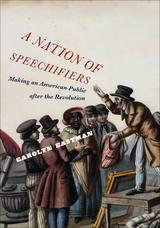 A Nation of Speechifiers: Making an American Public after the Revolution
Carolyn Eastman
University of Chicago Press, 2009 In the decades after the American Revolution, inhabitants of the United States began to shape a new national identity. Telling the story of this messy yet formative process, Carolyn Eastman argues that ordinary men and women gave meaning to American nationhood and national belonging by first learning to imagine themselves as members of a shared public.
She reveals that the creation of this American public—which only gradually developed nationalistic qualities—took place as men and women engaged with oratory and print media not only as readers and listeners but also as writers and speakers. Eastman paints vibrant portraits of the arenas where this engagement played out, from the schools that instructed children in elocution to the debating societies, newspapers, and presses through which different groups jostled to define themselves—sometimes against each other. Demonstrating the previously unrecognized extent to which nonelites participated in the formation of our ideas about politics, manners, and gender and race relations, A Nation of Speechifiers provides an unparalleled genealogy of early American identity.
 A Nation of Takers: America’s Entitlement Epidemic
Nicholas Eberstadt
Templeton Press, 2012 In A Nation of Takers: America’s Entitlement Epidemic, one of our country’s foremost demographers, Nicholas Eberstadt, details the exponential growth in entitlement spending over the past fifty years. As he notes, in 1960, entitlement payments accounted for well under a third of the federal government’s total outlays. Today, entitlement spending accounts for a full two-thirds of the federal budget. Drawing on an impressive array of data and employing a range of easy- to- read, four color charts, Eberstadt shows the unchecked spiral of spending on a range of entitlements, everything from medicare to disability payments. But Eberstadt does not just chart the astonishing growth of entitlement spending, he also details the enormous economic and cultural costs of this epidemic. He powerfully argues that while this spending certainly drains our federal coffers, it also has a very real,long-lasting, negative impact on the character of our citizens. Also included in the book is a response from one of our leading political theorists, William Galston. In his incisive response, he questions Eberstadt’s conclusions about the corrosive effect of entitlements on character and offers his own analysis of the impact of American entitlement growth.
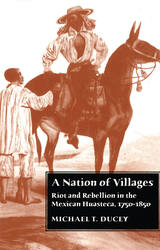 A Nation of Villages: Riot and Rebellion in the Mexican Huasteca, 1750-1850
Michael T. Ducey
University of Arizona Press, 2004 During the period 1769-1850, republican national institutions slowly replaced colonial and monarchical rule. This was a turbulent time in rural Mexico. It was a period of political instability marked by violent peasant rebellions that were longer, more violent, and involved more people than those that occurred in the colonial era. Mexican villagers became skilled insurrectionists. In this book, Michael Ducey analyzes the peasant rebellions in Mexico’s Huasteca region over that time, beginning with short-lived colonial riots, progressing through a long and brutal insurrection associated with the war of independence and several region-wide uprisings, and culminating in the "Caste War of the Huasteca" of the 1840s.
He asks not just why villagers revolted but how their discontent fit into the political drama of early national Mexico. Ducey shows how the war offered opportunities for villagers to settle scores with members of the local elite as peasants discovered new ways of imagining the state. They were far from being the isolated traditionalists who occasionally rebelled against political or economic change described in older scholarship. At least until the 1848-1850 Caste War, political disputes were more important than land.
This region’s peasants were both remarkably diverse and politically astute. Villagers adapted colonial political culture and later republican ideas to fashion local institutions that fit their own needs. Over the course of a hundred years, peasant tactics and political discourse evolved in a constant dialogue with the changing political climate, shifting from rhetorical statements of loyalty to the king to proclamations of federalism and their rights as citizens. A Nation of Villages ably demonstrates that rural villagers were more aware of elite ideologies than urban rulers were of the villagers’ political ideas. This long-term analysis of one region illuminates how rural people helped shape the republican state.
A Nation of Widening Opportunities: The Civil Rights Act at 50
Ellen D. Katz and Samuel R. Bagenstos, editors
Michigan Publishing, 2015 The Civil Rights Act of 1964 was an extraordinary achievement of law, politics, and human rights. On October 11, 2013, a diverse group of civil rights scholars met at the University of Michigan Law School in Ann Arbor to assess the interpretation, development, and administration of civil rights law in the five decades since President Johnson signed the Act. This volume comprises edited versions of the papers that these scholars presented, enriched by lively discussions at and after the conference, and it contributes to the continuing debates regarding the civil rights project in the United States and the world.
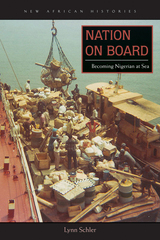 Nation on Board: Becoming Nigerian at Sea
Lynn Schler
Ohio University Press, 2016 In the 1940s, British shipping companies began the large-scale recruitment of African seamen in Lagos. On colonial ships, Nigerian sailors performed menial tasks for low wages and endured discrimination as cheap labor, while countering hardships by nurturing social connections across the black diaspora. Poor employment conditions stirred these seamen to identify with the nationalist sentiment burgeoning in postwar Nigeria, while their travels broadened and invigorated their cultural identities. Working for the Nigerian National Shipping Line, they encountered new forms of injustice and exploitation. When mismanagement, a lack of technical expertise, and pillaging by elites led to the NNSL’s collapse in the early 1990s, seamen found themselves without prospects. Their disillusionment became a broader critique of corruption in postcolonial Nigeria. In Nation on Board: Becoming Nigerian at Sea, Lynn Schler traces the fate of these seamen in the transition from colonialism to independence. In so doing, she renews the case for labor history as a lens for understanding decolonization, and brings a vital transnational perspective to her subject. By placing the working-class experience at the fore, she complicates the dominant view of the decolonization process in Nigeria and elsewhere.
 A Nation on the Line: Call Centers as Postcolonial Predicaments in the Philippines
Jan M. Padios
Duke University Press, 2018 In 2011 the Philippines surpassed India to become what the New York Times referred to as "the world's capital of call centers." By the end of 2015 the Philippine call center industry employed over one million people and generated twenty-two billion dollars in revenue. In A Nation on the Line Jan M. Padios examines this massive industry in the context of globalization, race, gender, transnationalism, and postcolonialism, outlining how it has become a significant site of efforts to redefine Filipino identity and culture, the Philippine nation-state, and the value of Filipino labor. She also chronicles the many contradictory effects of call center work on Filipino identity, family, consumer culture, and sexual politics. As Padios demonstrates, the critical question of call centers does not merely expose the logic of transnational capitalism and the legacies of colonialism; it also problematizes the process of nation-building and peoplehood in the early twenty-first century.
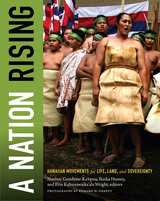 A Nation Rising: Hawaiian Movements for Life, Land, and Sovereignty
Noelani Goodyear-Ka'opua, Ikaika Hussey, and Erin Kahunawaika'ala Wright, eds.
Duke University Press, 2014 A Nation Rising chronicles the political struggles and grassroots initiatives collectively known as the Hawaiian sovereignty movement. Scholars, community organizers, journalists, and filmmakers contribute essays that explore Native Hawaiian resistance and resurgence from the 1970s to the early 2010s. Photographs and vignettes about particular activists further bring Hawaiian social movements to life. The stories and analyses of efforts to protect land and natural resources, resist community dispossession, and advance claims for sovereignty and self-determination reveal the diverse objectives and strategies, as well as the inevitable tensions, of the broad-tent sovereignty movement. The collection explores the Hawaiian political ethic of ea, which both includes and exceeds dominant notions of state-based sovereignty. A Nation Rising raises issues that resonate far beyond the Hawaiian archipelago, issues such as Indigenous cultural revitalization, environmental justice, and demilitarization.
Contributors. Noa Emmett Aluli, Ibrahim G. Aoudé, Kekuni Blaisdell, Joan Conrow, Noelani Goodyear-Ka'opua, Edward W. Greevy, Ulla Hasager, Pauahi Ho'okano, Micky Huihui, Ikaika Hussey, Manu Ka‘iama, Le‘a Malia Kanehe, J. Kehaulani Kauanui, Anne Keala Kelly, Jacqueline Lasky, Davianna Pomaika'i McGregor, Nalani Minton, Kalamaoka'aina Niheu, Katrina-Ann R. Kapa'anaokalaokeola Nakoa Oliveira, Jonathan Kamakawiwo'ole Osorio, Leon No'eau Peralto, Kekailoa Perry, Puhipau, Noenoe K. Silva, D. Kapua‘ala Sproat, Ty P. Kawika Tengan, Mehana Blaich Vaughan, Kuhio Vogeler, Erin Kahunawaika’ala Wright
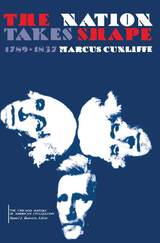 The Nation Takes Shape: 1789-1837
Marcus Cunliffe
University of Chicago Press, 1960 Marcus Cunliffe, whom the Washington Post and Times Herald calls "a master historian capable of seeing his subject whole," has written a cogent and revealing study of America's first half-century under the federal Constitution. Bounded by the first Washington Administration and the last Jackson Administration, this is the period in which democracy grew and shaped the nation. It witnessed the launching of the federal government; the expansion of the frontier; the establishment of a party system; the enunciation of a foreign policy; the manufacture of the symbols of nationalism; and the forging of the arguments of sectionalism. Most important, Mr. Cunliffe writes, "the American character seems to have been formed in essence within a generation of George Washington's accession to the Presidency."
"An urbane, stimulating, and admirably proportioned analysis. . . ."—Alexander DeConde, Wisconsin Magazine of History
"What [Mr. Cunliffe] has done is to weave together and show the fertile interplay of the American dream and the American reality—and show how much the dream modified the reality. . . . an acute and elegant performance."—Times Literary Supplement
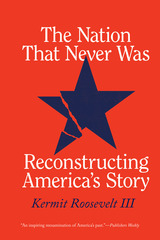 The Nation That Never Was: Reconstructing America's Story
Kermit Roosevelt III
University of Chicago Press, 2022 Our idea of the Founders' America and its values is not true. We are not the heirs of the Founders, but we can be the heirs of Reconstruction and its vision for equality.
There’s a common story we tell about America: that our fundamental values as a country were stated in the Declaration of Independence, fought for in the Revolution, and made law in the Constitution. But, with the country increasingly divided, this story isn’t working for us anymore—what’s more, it’s not even true. As Kermit Roosevelt argues in this eye-opening reinterpretation of the American story, our fundamental values, particularly equality, are not part of the vision of the Founders. Instead, they were stated in Lincoln’s Gettysburg Address and were the hope of Reconstruction, when it was possible to envision the emergence of the nation committed to liberty and equality.
We face a dilemma these days. We want to be honest about our history and the racism and oppression that Americans have both inflicted and endured. But we want to be proud of our country, too. In The Nation That Never Was, Roosevelt shows how we can do both those things by realizing we’re not the country we thought we were. Reconstruction, Roosevelt argues, was not a fulfillment of the ideals of the Founding but rather a repudiation: we modern Americans are not the heirs of the Founders but of the people who overthrew and destroyed that political order. This alternate understanding of American identity opens the door to a new understanding of ourselves and our story, and ultimately to a better America.
America today is not the Founders’ America, but it can be Lincoln’s America. Roosevelt offers a powerful and inspirational rethinking of our country’s history and uncovers a shared past that we can be proud to claim and use as a foundation to work toward a country that fully embodies equality for all.
A Nation Under Lawyers: How the Crisis in the Legal Profession Is Transforming American Society
Mary Ann Glendon
Harvard University Press, 1994 Mary Ann Glendon’s A Nation Under Lawyers is a guided tour through the maze of the late-twentieth-century legal world, in which even lawyers themselves can lose their bearings. Glendon depicts the legal profession as a system in turbulence, where a variety of beliefs and ideals are vying for dominance. Dramatizing issues and events through stories of lawyers and laypersons caught up in the currents of change, she provides a frank assessment of the people and ideas that are transforming our law-dependent culture.
 A Nation under Our Feet: Black Political Struggles in the Rural South from Slavery to the Great Migration
Steven Hahn
Harvard University Press, 2003 This is the epic story of how African-Americans, in the six decades following slavery, transformed themselves into a political people—an embryonic black nation. As Steven Hahn demonstrates, rural African-Americans were central political actors in the great events of disunion, emancipation, and nation-building. At the same time, Hahn asks us to think in more expansive ways about the nature and boundaries of politics and political practice.
Emphasizing the importance of kinship, labor, and networks of communication, A Nation under Our Feet explores the political relations and sensibilities that developed under slavery and shows how they set the stage for grassroots mobilization. Hahn introduces us to local leaders, and shows how political communities were built, defended, and rebuilt. He also identifies the quest for self-governance as an essential goal of black politics across the rural South, from contests for local power during Reconstruction, to emigrationism, biracial electoral alliances, social separatism, and, eventually, migration.
Hahn suggests that Garveyism and other popular forms of black nationalism absorbed and elaborated these earlier struggles, thus linking the first generation of migrants to the urban North with those who remained in the South. He offers a new framework—looking out from slavery—to understand twentieth-century forms of black political consciousness as well as emerging battles for civil rights. It is a powerful story, told here for the first time, and one that presents both an inspiring and a troubling perspective on American democracy.
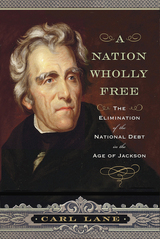 A Nation Wholly Free: The Elimination of the National Debt in the Age of Jackson
Carl Lane
Westholme Publishing, 2014 The Only Time America Was Free of Debt—and How It Led to the Two-Party Political System
“An engaging treatment of a topic of perennial concern and frequent misunderstanding, this lucid tale of the brief moment when the United States was debt-free should be on every Congress member’s bedside table.”—Peter J.Woolley, Professor of Comparative Politics, Fairleigh Dickinson University
When President James Monroe announced in his 1824 message to Congress that, barring an emergency, the large public debt inherited from the War for Independence, the Louisiana Purchase, and the War of 1812 would be extinguished on January 1, 1835, Congress responded by crafting legislation to transform that prediction into reality. Yet John Quincy Adams,Monroe’s successor, seemed not to share the commitment to debt freedom, resulting in the rise of opposition to his administration and his defeat for reelection in the bitter presidential campaign of 1828. The new president, Andrew Jackson, was thoroughly committed to debt freedom, and when it was achieved, it became the only time in American history when the country carried no national debt. In A Nation Wholly Free: The Elimination of the National Debt in the Age of Jackson, award-winning economic historian Carl Lane shows that the great and disparate issues that confronted Jackson, such as internal improvements, the “war” against the Second Bank of the United States, and the crisis surrounding South Carolina’s refusal to pay federal tariffs, become unified when debt freedom is understood as a core element of Jacksonian Democracy.
The era of debt freedom lasted only two years and ten months. As the government accumulated a surplus, a fully developed opposition party emerged—the beginning of our familiar two-party system—over rancor about how to allocate the newfound money. Not only did government move into an oppositional party system at this time, the debate about the size and role of government distinguished the parties in a pattern that has become familiar to Americans. The partisan debate over national debt and expenditures led to poorly thought out legislation, forcing the government to resume borrowing. As a result, after Jackson left office in 1837, the country fell into a major depression. Today we confront a debt that exceeds $17 trillion. Indeed, we have been borrowing ever since that brief time we freed ourselves from an oversized debt. A thoughtful, engaging account with strong relevance to today, A Nation Wholly Free is the fascinating story of an achievement that now seems fanciful.
A Nation within a Nation: Voices of the Oneidas in Wisconsin
L. Gordon McLester III
Wisconsin Historical Society Press, 2010 For the first time, the Oneidas of Wisconsin tell their own story in this richly diverse, authoritative contemporary history. A Nation within a Nation gathers first-person accounts, biographical essays, and scholars’ investigations in a sweeping and provocative consideration of the period of 1900-1969.
Nation Within: The History of the American Occupation of Hawai'i
Tom Coffman
Duke University Press, 2009 In 1893 a small group of white planters and missionary descendants backed by the United States overthrew the Kingdom of Hawai‘i and established a government modeled on the Jim Crow South. In Nation Within Tom Coffman tells the complex history of the unsuccessful efforts of deposed Hawaiian queen Lili‘uokalani and her subjects to resist annexation, which eventually came in 1898. Coffman describes native Hawaiian political activism, the queen's visits to Washington, D.C., to lobby for independence, and her imprisonment, along with hundreds of others, after their aborted armed insurrection. Exposing the myths that fueled the narrative that native Hawaiians willingly relinquished their nation, Coffman shows how Americans such as Theodore Roosevelt conspired to extinguish Hawai‘i's sovereignty in the service of expanding the United States' growing empire.
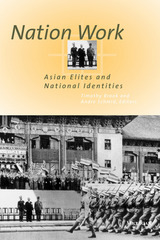 Nation Work: Asian Elites and National Identities
Timothy Brook and Andre Schmid, Editors
University of Michigan Press, 2000 As increasing attention is drawn to globalization, questions arise about the fate of "the nation," a political and social unit that for centuries has seemed the common-sense way to organize the world. In Nation Work, Timothy Brook and André Schmid draw together eight essays that use historical examples from Asian countries--China, India, Korea, and Japan--to enrich our understandings of the origin and growth of nations.
Asia provides fertile ground for this inquiry, the volume argues, because in Asia the history of the modern nation has been inseparable from global influences in the form of Western imperialism. Yet, while the impetus for building a modern national identity may have come from the need to fashion a favorable place in a world system dominated by Western nations, those engaged in nationalist enterprises found their particular voices more often in relation to tensions within Asia than in relation to more generic tensions between Asia and the West.
With topics ranging from public health measures in nineteenth-century Japan through textual scholarship of Tamil intellectuals, the willful division of Korea's history from China's, the development of China's cotton industry, and the meaning of "postnational-ism" for Chinese artists, the essays reveal the fascinating array of sites at which nation work can take place.
This will be essential reading for historians and social scientists interested in Asia.
Timothy Brook is Professor of History, Stanford University. André Schmid is Assistant Professor of East Asian Studies, University of Toronto.
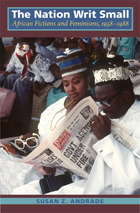 The Nation Writ Small: African Fictions and Feminisms, 1958-1988
Susan Z. Andrade
Duke University Press, 2011 In The Nation Writ Small, Susan Z. Andrade focuses on the work of Africa’s first post-independence generation of novelists, explaining why male writers came to be seen as the voice of Africa’s new nation-states, and why African women writers’ commentary on national politics was overlooked. Since Africa’s early female novelists tended to write about the family, while male authors often explicitly addressed national politics, it was assumed that the women writers were uninterested in the nation and the public sphere. Challenging that notion, Andrade argues that the female authors engaged national politics through allegory. In their work, the family stands for the nation; it is the nation writ small. Interpreting fiction by women, as well as several feminist male authors, she analyzes novels by Flora Nwapa and Buchi Emecheta (Nigeria); novellas by Ousmane Sembène, Mariama Bâ, and Aminata Sow Fall (Senegal); and bildungsromans by Tsitsi Dangarembga (Zimbabwe), Nuruddin Farah (Somalia), and Assia Djebar (Algeria). Andrade reveals the influence of Africa’s early women novelists on later generations of female authors, and she highlights the moment when African women began to write about macropolitics explicitly rather than allegorically.
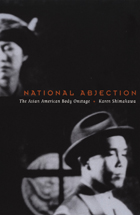 National Abjection: The Asian American Body Onstage
Karen Shimakawa
Duke University Press, 2002 National Abjection explores the vexed relationship between "Asian Americanness" and "Americanness” through a focus on drama and performance art. Karen Shimakawa argues that the forms of Asian Americanness that appear in U.S. culture are a function of national abjection—a process that demands that Americanness be defined by the exclusion of Asian Americans, who are either cast as symbolic foreigners incapable of integration or Americanization or distorted into an “honorary” whiteness. She examines how Asian Americans become culturally visible on and off stage, revealing the ways Asian American theater companies and artists respond to the cultural implications of this abjection. Shimakawa looks at the origins of Asian American theater, particularly through the memories of some of its pioneers. Her examination of the emergence of Asian American theater companies illuminates their strategies for countering the stereotypes of Asian Americans and the lack of visibility of Asian American performers within the theater world. She shows how some plays—Wakako Yamauchi’s 12-1-A, Frank Chin’s Chickencoop Chinaman, and The Year of the Dragon—have both directly and indirectly addressed the displacement of Asian Americans. She analyzes works attempting to negate the process of abjection—such as the 1988 Broadway production of M. Butterfly as well as Miss Saigon, a mainstream production that enacted the process of cultural displacement both onstage and off. Finally, Shimakawa considers Asian Americanness in the context of globalization by meditating on the work of Ping Chong, particularly his East-West Quartet.
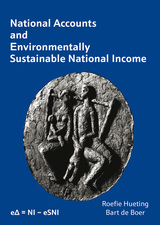 National Accounts and Environmentally Sustainable National Income
Roefie Hueting and Bart de Boer
Eburon Academic Publishers, 2019 Our planet is threatened by a mistaken confidence in erroneously calculated growth. The term “economic growth” can only mean an increase in human welfare, but it is often wrongly identified with production growth that may in fact be destructive to the environment. Thus, while the measures of standard National Income (NI) or Gross Domestic Product (GDP) are useful for many purposes, they are inadequate in guiding environmental policy making. This book develops the corrective concept of an environmentally Sustainable National Income (eSNI). eSNI is defined as the maximally attainable level of production, using the technology of the year under review, whereby the vital environmental functions (possible uses) of the not-human-made physical surroundings remain available for future generations. In order to accurately judge environmental sustainability, the authors show, NI and eSNI must be addressed jointly. Drawing on data from the Netherlands from 1990 to 2015, the authors demonstrate the effectiveness of eSNI and argue that national statistical bureaus around the world should provide this measure to their own policymakers, so that policymaking across the globe might be informed by sound information about both national economies and the global environment.
 A National Acoustics: Music and Mass Publicity in Weimar and Nazi Germany
Brian Currid
University of Minnesota Press, 2006 A sound track of Germany in the early twentieth century might conjure military music and the voice of Adolf Hitler rising above a cheering crowd. In A National Acoustics, Brian Currid challenges this reductive characterization by investigating the transformations of music in mass culture from the Weimar Republic to the end of the Nazi regime.
Offering a nuanced analysis of how publicity was constructed through radio programming, print media, popular song, and film, Currid examines how German citizens developed an emotional investment in the nation and other forms of collectivity that were tied to the sonic experience. Reading in detail popular genres of music—the Schlager (or “hit”), so-called gypsy music, and jazz—he offers a complex view of how they played a part in the creation of German culture.
A National Acoustics contributes to a new understanding of what constitutes the public sphere. In doing so, it illustrates the contradictions between Germany’s social and cultural histories and how the technologies of recording not only were vital to the emergence of a national imaginary but also exposed the fault lines in the contested terrain of mass communication.
Brian Currid is an independent scholar who lives in Berlin.
 The National Alliance of Black Feminists: A History
Ileana Nachescu
University of Illinois Press, 2025 Founded in 1975, the non-partisan National Alliance of Black Feminists (NABF) played a critical role in the Black women’s liberation movement and the fight for the Equal Rights Amendment. The Chicago-based organization’s Black humanist feminism powered a singular dedication to building coalitions while influencing its historic set of comprehensive political, economic, and cultural demands. Ileana Nachescu places the NABF’s history as the bridge between Black women’s social activism in the 1970s and the intellectual activism of the 1980s. Her account details the NABF’s work and how it reflected the group’s strong humanist belief in the transformation of all human beings. Nachescu also shows that the NABF’s post-Eighties erasure from movement histories is consistent with how many white feminists marginalized women of color and rejected their leadership. From there, Nachescu examines Black lesbians’ vibrant support of the NABF and shows how respectability politics pressured the group to support its lesbian membership in private but maintain a public silence on the issue. A rare in-depth look at an overlooked organization, The National Alliance of Black Feminists tells an untold story of Black women’s liberation in the Midwest.
 National Armies and NATO, 1949-1991: The Burden of Alliance
Jan Hoffenaar
Leiden University Press, 2026 "For almost half a century, NATO’s armies deterred a Soviet attack on Western Europe. Today, they once again provide a check on Russia's revanchist agenda. As in the Cold War, if Russia’s aggression escalates to armed conflict, the Alliance’s armies will likely bear the brunt of the fighting. Thus, a study of the national armies that comprised NATO during the Cold War has both historical and current relevance. Each chapter offers an analysis of how the respective constituent NATO army balanced its commitments to the alliance with other, often more pressing national priorities. Both individually and collectively, these chapters address questions that are still important today. How did national armies benefit from membership in NATO, and how did NATO membership impede their national obligations? How did NATO membership effect its constituent armies’ strategy, force structure, doctrine, and procurement? How did national armies reconcile disagreements with other national forces, some of which long predated NATO membership? By providing a comparative study of NATO’s armies, this volume provides both a long-needed historical assessment and essential understanding of the problems facing the alliance and its members today."
The National Balance Sheet of the United States, 1953-1980
Raymond W. Goldsmith
University of Chicago Press, 1982 In what constitutes a landmark in the field of national accounts, Raymond W. Goldsmith gives detailed estimates of the nation's assets and liabilities year by year from 1953 through 1975 and for the benchmark years of 1900, 1929, and 1980. Special features of this work include presentation of data sector by sector, which casts light on the changing roles of financial institutions, and Goldsmith's expression of data in the form of ratios rather than in absolute dollar values, a device that makes the material both more informative and easier to absorb.
The most comprehensive and extensive study of national wealth ever attempted, The National Balance Sheet will be a rich resource for researchers and users of national accounts.
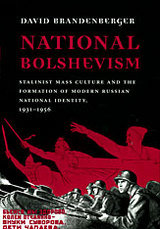 National Bolshevism: Stalinist Mass Culture and the Formation of Modern Russian National Identity, 1931–1956
David Brandenberger
Harvard University Press, 2002 During the 1930s, Stalin and his entourage rehabilitated famous names from the Russian national past in a propaganda campaign designed to mobilize Soviet society for the coming war. Legendary heroes like Aleksandr Nevskii and epic events like the Battle of Borodino quickly eclipsed more conventional communist slogans revolving around class struggle and proletarian internationalism. In a provocative study, David Brandenberger traces this populist “national Bolshevism” into the 1950s, highlighting the catalytic effect that it had on Russian national identity formation.
Beginning with national Bolshevism’s origins within Stalin’s inner circle, Brandenberger next examines its projection into Soviet society through education and mass culture—from textbooks and belletristic literature to theater, opera, film, and the arts. Brandenberger then turns to the popular reception of this propaganda, uncovering glimpses of Stalin-era public opinion in letters, diaries, and secret police reports.
Controversial insofar as Soviet social identity is commonly associated with propaganda promoting class consciousness, this study argues that Stalinist ideology was actually more Russian nationalist than it was proletarian internationalist. National Bolshevism helps to explain not only why this genre of populism survived Stalin’s death in 1953, but why it continues to resonate among Russians today.
 National Camera: Photography and Mexico’s Image Environment
Roberto Tejada
University of Minnesota Press, 2009 In National Camera, Roberto Tejada offers a comprehensive study of Mexican photography from the early twentieth century to today, demonstrating how images have shaped identities in Mexico, the United States, and in the borderlands where the two nations and cultures intersect—a place Tejada calls the shared image environment.
The “problem” of photography in Mexico, Tejada shows, reveals cross-cultural episodes that are rife with contradictions, especially in the complex terms of cultural and sexual difference. Analyzing such topics as territory, sexuality, and social and ethnic relations in image making, Tejada delves into the work of key figures including Manuel Alvarez Bravo, Edward Weston, Tina Modotti, Marius de Zayas, and Julien Levy, as well as the Agustín Víctor Casasola Archive, the Boystown photographs, and contemporary Mexican and Latina photo-based artists.
From the Mexican Revolution of 1910–1920 to the U.S.–Mexico borderlands of today, Tejada traces the connective thread that photography has provided between Mexican and U.S. American intellectual and cultural production and, in doing so, defines both nations.
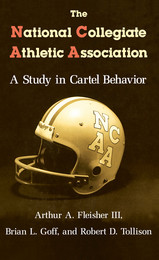 The National Collegiate Athletic Association: A Study in Cartel Behavior
Arthur A. Fleisher III, Brian L. Goff, and Robert D. Tollison
University of Chicago Press, 1992 Intercollegiate sports is an enterprise that annually grosses over $1 billion in income. Some schools receive more than $20 million from athletic programs, perhaps as much as $10 million simply from the sale of football tickets.
Probing the history and business practices of the most powerful sports organization of colleges and universities in the United States, the authors present a persuasive case that the NCAA is in fact a cartel, its members engaged in classically defined restrictive practices for the sole purpose of jointly maximizing their profits.
This fresh perspective on the NCAA's institutional structure helps to explain why illicit payments to athletes persist, why non-NCAA organizations have not flourished, and why members have readily agreed on certain suspect rules.
Offering a valuable case study for sports analysts and students of economics and cartel behavior, this book is a revealing glimpse inside the embattled NCAA program.
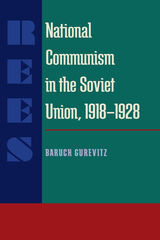 National Communism in the Soviet Union, 1918-28
Baruch Gurevitz
University of Pittsburgh Press, 1980 The Jewish Communist Workers' Party, the Poale Zion, provides a unique perspective on the question of how Marxism and the early Soviet Union dealt with issues of nationalism. According to Bolshevik ideology, when anti-Semitism disappeared in the new Socialist society, Jews would assimilate. In reality, such assimilation would be a very long, slow process. The Poale Zion supported the socialist struggle against oppression and exploitation of classes and nations, but it called for the formation of an international organization that would recognize the right of Jews to emigrate freely to Palestine and work for the creation of a democratic republic where people could retain their national identities and have both autonomy and representation in the union. Gurevitz analyzes the Soviet Poale Zion as representative of Jewish communism as nationalism in its purest form, and he traces the complex contradictions between Jewish nationalism and the Communist ideal of assimilation in the early years of the Soviet Union.
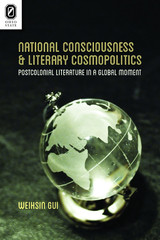 National Consciousness and Literary Cosmopolitics: Postcolonial Literature in a Global Moment
Weihsin Gui
Ohio State University Press, 2013 National Consciousness and Literary Cosmopolitics: Postcolonial Literature in a Global Moment by Weihsin Gui argues that postcolonial literature written within a framework of globalization still takes nationalism seriously rather than dismissing it as obsolete. Authors and texts often regarded as cosmopolitan, diasporic, or migrant actually challenge globalization’s tendency to treat nations as absolute and homogenous sociocultural entities. While social scientific theories of globalization after 1945 represent nationalism as antithetical to transnational economic and cultural flows, National Consciousness and Literary Cosmopolitics contends that postcolonial literature represents nationalism as a form of cosmopolitical engagement with what lies beyond the nation’s borders. Postcolonial literature never gave up on anticolonial nationalism but rather revised its meaning, extending the idea of the nation beyond an identity position into an interrogation of globalization and the neocolonial state through political consciousness and cultural critique. The literary cosmopolitics evident in the works of Kazuo Ishiguro, Derek Walcott, Shirley Geok-lin Lim, Preeta Samarasan, and Twan Eng Tan distinguish between an instrumental national identity and a critical nationality that negates the subordination of nationalism by neocolonial regimes and global capitalism. Through their formal innovations, these writers represent nationalism not as a monolithic or essentialized identity or body of people but as a cosmopolitcal constellation of political, social, and cultural forces.
National Consciousness in Eighteenth-Century Russia
Hans Rogger
Harvard University Press This is the first intensive study of the developing national consciousness in 18th-century Russian life and letters. Historians have paradoxically argued a lack of national consciousness in this period both from Russia's backwardness and its imitativeness. As Hans Rogger points out, however, “neither the dearth nor the excess of Western influence, neither too little Enlightenment nor too much French frivolity are adequate formulations of the question for Russia”; and he demonstrates convincingly that the impact of European attitudes was already forcing Russians to articulate a national cultural identity well before the 19th century.
National Conversations: Public Service Media and Cultural Diversity in Europe
Edited by Gavan Titley, Karina Horsti, and Gunilla Hultén
Intellect Books, 2014 Public service broadcasting is in the process of evolving into “public service media” as a response to the challenges of digitalization, intensive competition, and financial vulnerability. While many commentators regard public service as being in transition, a central dimension of its mission—to integrate and unify the nation while respecting and representing plurality—is being reemphasized and relegitimated in a political climate where the politics of migration and cultural diversity loom large in public debate. Through a series of thematic chapters and in-depth national case studies, National Conversations examines the reshaping of public service media and the concomitant development of new guiding discourses, policies, and program practices for addressing difference and lived multiculturalism in Europe.
 National Cultures at Grass-root Level
Antonina Kloskowska
Central European University Press, 2001 The major dilemma this volume addresses is the function of national identity in a modern society, for despite the trend towards globalization, the world continues to be riddled with national conflict.
Kłoskowska begins by looking at the controversy between two competing concepts of the origin of the nation – political and ethnic. She examines the central issues of the argument, and in particular, the characteristics and effects of ethnic differences on personal identity and the appropriation of national culture. Her theories are based upon autobiographies by individuals belonging to various national minorities in Poland and other areas where ethnic borders are blurred. The group studied included mostly young intellectuals: Ukrainians, Belarussians and Silesian-Germans. She examines the national attitudes of the various countries the ethnic minorities have been forced to live with. In her conclusion, Kłoskowska takes the view that national cultures are either ‘open’ or ‘closed’ and stresses the importance of participating in more than one cultural medium.
National Cultures at the Grass-Root Level is rich in information on contemporary theories of the nation, on its origin, character and future, and offers a deep insight into the complex and often ambiguous reality of national attitudes.
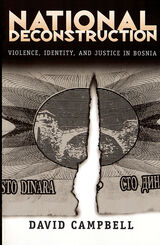 National Deconstruction: Violence, Identity, and Justice in Bosnia
David Campbell
University of Minnesota Press, 1998 What our response to the Bosnian crisis can tell us about multiculturalism in the United States and beyond. How did Bosnia, once a polity of intersecting and overlapping identities, come to be understood as an intractable ethnic problem? David Campbell pursues this question-and its implications for the politics of community, democracy, justice, and multiculturalism-through readings of media and academic representations of the conflict in Bosnia. National Deconstruction is a rethinking of the meaning of “ethnic/nationalist” violence and a critique of the impoverished discourse of identity politics that crippled the international response to the Bosnian crisis. Rather than assuming the preexistence of an entity called Bosnia, Campbell considers the complex array of historical, statistical, cartographic, and other practices through which the definitions of Bosnia have come to be. These practices traverse a continuum of political spaces, from the bodies of individuals and the corporate body of the former Yugoslavia to the international bodies of the world community. Among the book’s many original disclosures, arrived at through a critical reading of international diplomacy, is the shared identity politics of the peacemakers and paramilitaries. Equally significant is Campbell’s conclusion that the international response to the Bosnian war was hamstrung by the poverty of Western thought on the politics of heterogeneous communities. Indeed, he contends that Europe and the United States intervened in Bosnia not to save the ideal of multiculturalism abroad but rather to shore up the nationalist imaginary so as to contain the ideal of multiculturalism at home.By bringing to the fore the concern with ethics, politics, and responsibility contained in more traditional accounts of the Bosnian war, this book is a major statement on the inherently ethical and political assumptions of deconstructive thought-and the reworkings of the politics of community it enables.Awarded “Book of the Year 1999” by the International Forum Bosnia (Sarajevo) and the Human Rights Review (USA).ISBN 0-8166-2936-6 Cloth $62.95xxISBN 0-8166-2937-4 Paper $24.95x382 pages 5 7/8 x 9 SeptemberTranslation inquiries: University of Minnesota Press
 National Duties: Custom Houses and the Making of the American State
Gautham Rao
University of Chicago Press, 2016 A historical account of the relationship between the federal government and merchant capital in the formative years of the American Republic.
In the wake of the American Revolution, if you had asked a citizen whether his fledgling state would survive more than two centuries, the answer would have been far from confident. The problem, as is so often the case, was money. Left millions of dollars of debt by the war, the nascent federal government created a system of taxes on imported goods and installed custom houses at the nation’s ports, which were charged with collecting these fees. Gradually, the houses amassed enough revenue from import merchants to stabilize the new government. But, as the fragile United States was dependent on this same revenue, the merchants at the same time gained outsized influence over the daily affairs of customs houses. As the United States tried to police this commerce in the early nineteenth century, the merchants’ stranglehold on custom house governance proved to be formidable.
In National Duties, Gautham Rao makes the case that the origins of the federal government and the modern American state lie in these conflicts at government custom houses between the American Revolution and the presidency of Andrew Jackson. He argues that the contours of the government emerged from the push-and-pull between these groups, with commercial interests gradually losing power to the administrative state, which only continued to grow and lives on today.
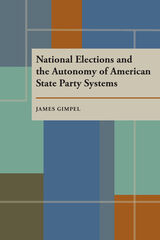 National Elections and the Autonomy of American State Party Systems
James G. Gimpel
University of Pittsburgh Press, 1996 Traditional theories of party organization have emphasized two-party electoral competition as the force behind party unity in state politics. V. O. Key first advanced this theory in Southern Politics, where he concluded that party factionalism in the South was mainly attributable to the one-party character of the region. But this traditional theory does not fit all states equally well. In the states of the West, especially, parties are competitive, but political activity is centered on candidates, not parties.
The theory of candidate-centered politics allows Gimpel to explain why party factionalism has persisted in many regions of the United States in spite of fierce two-party competition. Using interviews, polling data, elections returns, and demographic information, Gimpel contends that major upheavals in the two-party balance of presidential voting may leave lower offices untouched.
 National Growth and Economic Change in the Upper Midwest
James M. Henderson
University of Minnesota Press, 1965 This volume constitutes the final, general report of the comprehensive research conducted by the Upper Midwest Economic Study, a joint undertaking of the Upper Midwest Research and Development Council and the University of Minnesota. The authors present a detailed analysis of the economy of the Upper Midwest, the region coincident with the Ninth Federal Reserve District, which includes Montana, North Dakota, South Dakota, Minnesota, twenty-six counties in northwestern Wisconsin, and Michigan’s Upper Peninsula. The present study analyzes the region’s past economic growth, its current structure, and possible future development. The region’s initial economic growth was based upon its natural resources—land, forest, and minerals. Today productivity growth is increasing more rapidly than demand in most of these sectors. Hence, total employment opportunities in resource-based industries are declining. Future employment growth generally must be based on the region’s advantage in human resources. This is the challenge for economic growth in the Upper Midwest. The same challenge exists on a nation-wide basis, but the severity of transition away from natural resources industries is greater in the Upper Midwest because of its above-average reliance on such industries. The authors analyze economic change in the region from 1950 to 1960 and possible future development through 1975, with projections of employment, income, population, and migration for 1975. The projections, based on an assumption of no new action to facilitate economic growth in the region, serve mainly as a departure point for the analysis of regional policy and action.
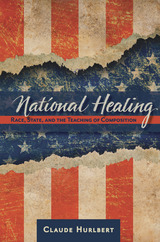 National Healing: Race, State, and the Teaching of Composition
Claude Hurlbert
Utah State University Press, 2013 In National Healing, author Claude Hurlbert persuasively relates nationalism to institutional racism and contends that these are both symptoms of a national ill health afflicting American higher education and found even in the field of writing studies. Teachers and scholars, even in progressive fields like composition, are unwittingly at odds with their own most liberatory purposes, he says, and he advocates consciously broadening our understanding of rhetoric and writing instruction to include rhetorical traditions of non-Western cultures.
Threading a personal narrative of his own experiences as a student, professor, and citizen through a wide ranging discussion of theory, pedagogy, and philosophy in the writing classroom, Hurlbert weaves a vision that moves beyond simple polemic and simplistic multiculturalism. National Healing offers a compelling new aesthetic, epistemological, and rhetorical configuration.
 National Health Insurance in the United States and Canada: Race, Territory, and the Roots of Difference
Gerard W. Boychuk
Georgetown University Press, 2008 After World War II, the United States and Canada, two countries that were very similar in many ways, struck out on radically divergent paths to public health insurance. Canada developed a universal single-payer system of national health care, while the United States opted for a dual system that combines public health insurance for low-income and senior residents with private, primarily employer-provided health insurance—or no insurance—for everyone else. In National Health Insurance in the United States and Canada, Gerard W. Boychuk probes the historical development of health care in each country, honing in on the most distinctive social and political aspects of each country—the politics of race in the U.S. and territorial politics in Canada, especially the tensions between the national government and the province of Quebec. In addition to the politics of race and territory, Boychuk sifts through the numerous factors shaping health policy, including national values, political culture and institutions, the power of special interests, and the impact of strategic choices made at critical junctures. Drawing on historical archives, oral histories, and public opinion data, he presents a nuanced and thoughtful analysis of the evolution of the two systems, compares them as they exist today, and reflects on how each is poised to meet the challenges of the future.
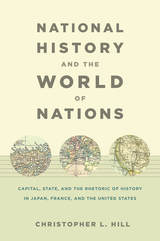 National History and the World of Nations: Capital, State, and the Rhetoric of History in Japan, France, and the United States
Christopher L. Hill
Duke University Press, 2008 Focusing on Japan, France, and the United States, Christopher L. Hill reveals how the writing of national history in the late nineteenth century made the reshaping of the world by capitalism and the nation-state seem natural and inevitable. The three countries, occupying widely different positions in the world, faced similar ideological challenges stemming from the rapidly changing geopolitical order and from domestic political upheavals: the Meiji Restoration in Japan, the Civil War in the United States, and the establishment of the Third Republic in France. Through analysis that is both comparative and transnational, Hill shows that the representations of national history that emerged in response to these changes reflected rhetorical and narrative strategies shared across the globe. Delving into narrative histories, prose fiction, and social philosophy, Hill analyzes the rhetoric, narrative form, and intellectual genealogy of late-nineteenth-century texts that contributed to the creation of national history in each of the three countries. He discusses the global political economy of the era, the positions of the three countries in it, and the reasons that arguments about history loomed large in debates on political, economic, and social problems. Examining how the writing of national histories in the three countries addressed political transformations and the place of the nation in the world, Hill illuminates the ideological labor national history performed. Its production not only naturalized the division of the world by systems of states and markets, but also asserted the inevitability of the nationalization of human community; displaced dissent to pre-modern, pre-national pasts; and presented the subject’s acceptance of a national identity as an unavoidable part of the passage from youth to adulthood.
 National Identities and Post-Americanist Narratives
Donald E. Pease
Duke University Press, 1994 National narratives create imaginary relations within imagined communities called national peoples. But in the American narrative, alongside the nexus of belonging established for the national community, the national narrative has represented other peoples (women, blacks, "foreigners", the homeless) from whom the property of nationness has been removed altogether and upon whose differences from them the national people depended for the construction of their norms. Dismantling this opposition has become the task of post-national (Post-Americanist) narratives, bent on changing the assumptions that found the "national identity." This volume, originally published as a special issue of bounrary 2, focuses on the process of assembling and dismantling the American national narrative(s), sketching its inception and demolition. The contributors examine various cultural, political, and historical sources--colonial literature, mass movements, epidemics of disease, mass spectacle, transnational corporations, super-weapons, popular magazines, literary texts--out of which this narrative was constructed, and propose different understandings of nationality and identity following in its wake. Contributors. Jonathan Arac, Lauren Berlant, Robert J. Corber, Elizabeth Freeman, Kathryn V. Lingberg, Jack Matthews, Alan Nadel, Patrick O'Donnell, Daniel O'Hara, Donald E. Pease, Ross Posnock, John Carlos Rowe, Rob Wilson
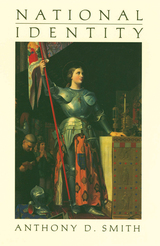 National Identity
Anthony D. Smith
University of Nevada Press, 1993 Why do people feel loyalty to a nation, as well as to family, region, class, and religion? When is a healthy sense of national identity transformed into virulent nationalism? What are the ethnic roots of so many contemporary conflicts? Can nations be created by design when colonial or multiethnic empires collapse? And what, exactly, is a nation? Such controversial questions are analyzed in this stimulating new text. Smith asks why the first modern nation-states developed in the West and considers how ethnic origins, religion, language, and shared symbols provide a sense of nation—even to the Basques, Kurds, and Tamils who are without states of their own. He illuminates his argument with a wealth of detailed examples: the divisions in the former Soviet Union, ethnic separatism within Europes, pan-Arab and pan-African movements, the successes and failures of nation-building on every continent. Throughout National Identity Smith stresses the positive as well as the pernicious aspects of strong national allegiances. A provocative final chapter considers the prospects of a post-national world. This will be of particular interest to ethnographers, students of international studies, historical sociologists, and political scientists.
 National Identity in Indian Popular Cinema, 1947-1987
By Sumita S. Chakravarty
University of Texas Press, 1993 Although Indian popular cinema has a long history and is familiar to audiences around the world, it has rarely been systematically studied. This book offers the first detailed account of the popular film as it has grown and changed during the tumultuous decades of Indian nationhood. The study focuses on the cinema’s characteristic forms, its range of meanings and pleasures, and, above all, its ideological construction of Indian national identity. Informed by theoretical developments in film theory, cultural studies, postcolonial discourse, and “Third World” cinema, the book identifies the major genres and movements within Bombay cinema since Independence and uses them to enter larger cultural debates about questions of identity, authenticity, citizenship, and collectivity. Chakravarty examines numerous films of the period, including Guide (Vijay Anand, 1965), Shri 420 [The gentleman cheat] (Raj Kapoor, 1955), and Bhumika [The role] (Shyam Benegal, 1977). She shows how “imperso-nation,” played out in masquerade and disguise, has characterized the representation of national identity in popular films, so that concerns and conflicts over class, communal, and regional differences are obsessively evoked, explored, and neutralized. These findings will be of interest to film and area specialists, as well as general readers in film studies.
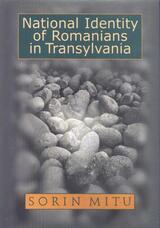 National Identity of Romanians in Transylvania
Sorin Mitu
Central European University Press, 2001 This meticulously researched and elegantly written book is the most authoritative study of the emergence of modern Romanian identity in Transylvania during the eighteenth and nineteenth centuries. Based upon a plethora of contemporary published sources, Mitu approaches national identity from a variety of perspectives - from within the Romanian community itself and their reaction to the image others had of them. The author sheds new light on the problems of self-evaluation using a method he describes as "functional analysis" to examine a complex set of ideologies and propaganda. This approach helps the reader to understand the intricate web of contemporary Romanian nationalism. National Identity of Romanians in Transylvania appeals to scholars of modern Romanian history, those focusing on the Habsburg Monarchy and the study of modern nationalism. The book is an important contribution to the expanding debate on nationalism and national identity from an East European perspective.
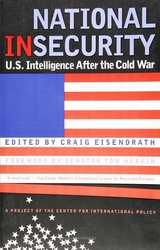 National Insecurity: U.S. Intelligence After the Cold War
edited by Craig Eisendrath, foreword by Tom Harkin
Temple University Press, 2000 A drastic reform of intelligence activities is long overdue. The Cold War has been over for ten years. No country threatens this nation's existence. Yet we still spend billions of dollars on covert action and espionage.
In National Insecurity ten prominent experts describe, from an insider perspective, what went wrong with U.S. intelligence and what will be necessary to fix it. Drawing on their experience in government administration, research, and the foreign service, they propose a radical rethinking of the United States' intelligence needs in the post-Cold War world. In addition, they offer a coherent and unified plan for reform that can simultaneously protect U. S. security and uphold the values of our democratic system.
As we now know, even during the Cold War, when intelligence was seen as a matter of life and death, our system served us badly. It provided unreliable information, which led to a grossly inflated military budget, as it wreaked havoc around the world, supporting corrupt regimes, promoting the drug trade, and repeatedly violating foreign and domestic laws. Protected by a shroud of secrecy, it paid no price for its mistakes. Instead it grew larger and more insulated every year.
Taking into consideration our strategic interests abroad as well as the price of covert operations in dollars, in reliability, and in good will, every American taxpayer can be informed by and will want to read this book. National Insecurity is essential for readers interested in contemporary political issues, international relations, U.S. history, public policy issues, foreign policy, intelligence reform, and political science.
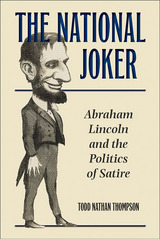 The National Joker: Abraham Lincoln and the Politics of Satire
Todd Nathan Thompson
Southern Illinois University Press, 2015 Abraham Lincoln’s sense of humor proved legendary during his own time and remains a celebrated facet of his personality to this day. Indeed, his love of jokes—hearing them, telling them, drawing morals from them—prompted critics to dub Lincoln “the National Joker.” The political cartoons and print satires that mocked Lincoln often trafficked in precisely the same images and terms Lincoln humorously used to characterize himself. In this intriguing study, Todd Nathan Thompson considers the politically productive tension between Lincoln’s use of satire and the satiric treatments of him in political cartoons, humor periodicals, joke books, and campaign literature. By fashioning a folksy, fallible persona, Thompson shows, Lincoln was able to use satire as a weapon without being severely wounded by it.
In his speeches, writings, and public persona, Lincoln combined modesty and attack, engaging in strategic self-deprecation while denouncing his opponents, their policies, and their arguments, thus refiguring satiric discourse as political discourse and vice versa. At the same time, he astutely deflected his opponents’ criticisms of him by embracing and sometimes preemptively initiating those criticisms. Thompson traces Lincoln’s comic sources and explains how, in reapplying others’ jokes and stories to political circumstances, he transformed humor into satire. Time and time again, Thompson shows, Lincoln engaged in self-mockery, turning negative assumptions or depictions of him—as ugly, cowardly, jocular, inexperienced—into positive traits that identified him as an everyman while attacking his opponents’ claims to greatness, heroism, and experience as aristocratic or demagogic. Thompson also considers how Lincoln took advantage of political cartoons and other media to help proliferate the particular Lincoln image of the “self-made man”; underscores exceptions to Lincoln’s ability to mitigate negative, satiric depictions of him; and closely examines political cartoons from both the 1860 and 1864 elections. Throughout, Thompson’s deft analysis brings to life Lincoln’s popular humor.
 The National Labs: Science in an American System, 1947-1974
Peter J. Westwick
Harvard University Press, 2003 The national laboratories--Livermore, Berkeley, Los Alamos, Argonne, Oak Ridge, and Brookhaven--have occupied a central place in the landscape of American science for more than fifty years. Responsible for the development of nuclear weapons, reactors, and other technologies that shaped American policy and culture in the Cold War, scientists from these labs also pursued physical and biomedical research that fundamentally changed our understanding of nature. But all of this has come at great cost, in terms of finance, facilities, and manpower, and has forced major adjustments in the framework of American science.
Deeply researched and lucidly written, The National Labs is the first book to trace the confluence of diverse interests that created and sustained this extensive enterprise. Peter J. Westwick takes us from the origins of the labs in the Manhattan Project to their role in building the hydrogen bomb, nuclear power reactors, and high-energy accelerators, to their subsequent entry into such fields as computers, meteorology, space science, molecular biology, environmental science, and alternative energy sources. By showing us that the national laboratory system developed as a reflection of American ideals of competition and decentralization in the Cold War, Westwick also demonstrates how scientific institutions reflect the values of their surrounding political system and culture.
National Language Planning and Language Shifts in Malaysian Minority Communities: Speaking in Many Tongues
Edited by Dipika Mukherjee and Maya Khemlani David
Amsterdam University Press, 2011 Malaysia has long been a melting pot of various cultures and ethnicities, including the three largest populations, the Malay, Chinese, and Indians. Despite this, efforts to implement multilingualism, advocated by language educators and policy makers, have been marred by political and religious affiliations. Drawing on two decades of field research, this timely analysis of language variation in Malaysia is an important contribution to the understanding not only of linguistic pluralism in the country, but also of the Indian Diaspora, and of the effects of language change on urban migrant populations. The research presented here will be of interest to scholars of Southeast Asian and South Asian Studies.
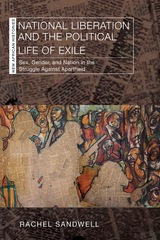 National Liberation and the Political Life of Exile: Sex, Gender, and Nation in the Struggle Against Apartheid
Rachel Sandwell
Ohio University Press, 2025 The first book-length study to reveal how women in exile shaped South Africa’s antiapartheid movement This groundbreaking book explores the often-overlooked role of women in South Africa’s liberation movements, particularly within the African National Congress during its years in exile from 1960 to 1990. It examines how transformations in gender roles—though contested—were central to imagining a postapartheid South Africa. Through an analysis of women’s diplomatic work and their advocacy for policies on sexual education, birth control, family life, and childcare, Rachel Sandwell challenges traditional narratives that have ignored or minimized women’s contributions. She highlights how South African women played a crucial role in connecting exiles to left-wing international organizations like the Women’s International Democratic Federation, positioning women as key figures in global anticolonial politics. The book also explores how gender transformation was at the heart of the exiled antiapartheid movement’s vision for a free South Africa. Women fought for recognition beyond the role of “mothers of the nation,” sparking internal debates over revolutionary morality, the compatibility of motherhood with military service, and responses to sexual and domestic violence within the movement. These struggles mirrored broader ideological conflicts over nation building, belonging, and political identity as the African National Congress sought legitimacy as a government-in-exile. Ultimately, National Liberation and the Political Life of Exile asks how we write histories of revolutionary movements—especially those that, despite their transformative ambitions, did not fully realize their goals. A vital contribution to feminist history, anticolonial studies, and the history of global liberation struggles, this book reshapes our understanding of gender and politics in the antiapartheid movement.
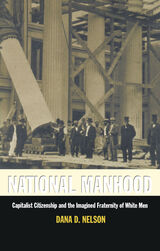 National Manhood: Capitalist Citizenship and the Imagined Fraternity of White Men
Dana D. Nelson
Duke University Press, 1998 National Manhood explores the relationship between gender, race, and nation by tracing developing ideals of citizenship in the United States from the Revolutionary War through the 1850s. Through an extensive reading of literary and historical documents, Dana D. Nelson analyzes the social and political articulation of a civic identity centered around the white male and points to a cultural moment in which the theoretical consolidation of white manhood worked to ground, and perhaps even found, the nation. Using political, scientific, medical, personal, and literary texts ranging from the Federalist papers to the ethnographic work associated with the Lewis and Clark expedition to the medical lectures of early gynecologists, Nelson explores the referential power of white manhood, how and under what conditions it came to stand for the nation, and how it came to be a fraternal articulation of a representative and civic identity in the United States. In examining early exemplary models of national manhood and by tracing its cultural generalization, National Manhood reveals not only how an impossible ideal has helped to form racist and sexist practices, but also how this ideal has simultaneously privileged and oppressed white men, who, in measuring themselves against it, are able to disavow their part in those oppressions. Historically broad and theoretically informed, National Manhood reaches across disciplines to engage those studying early national culture, race and gender issues, and American history, literature, and culture.
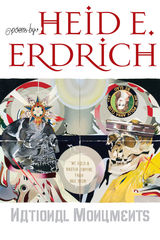 National Monuments
Heid E. Erdrich
Michigan State University Press, 2008 Many of the poems in National Monuments explore bodies, particularly the bodies of indigenous women worldwide, as monuments—in life, in photos, in graves, in traveling exhibitions, and in plastic representations at the airport. Erdrich sometimes imagines what ancient bones would say if they could speak. Her poems remind us that we make monuments out of what remains—monuments are actually our own imaginings of the meaning or significance of things that are, in themselves, silent.
As Erdrich moves from the expectedly "poetic" to the voice of a newspaper headline or popular culture, we are jarred into wondering how we make our own meanings when the present is so immediately confronted by the past (or vice versa). The language of the scientists that Erdrich sometimes quotes in epigraphs seems reductive in comparison to the richness of tone and meaning that these poems—filled with puns, allusions, and wordplay—provide.
Erdrich's poetry is literary in the best sense of the word, infused with an awareness of the poetic canon. Her revisions of and replies to poems by William Carlos Williams, Robert Frost, and others offer an indigenous perspective quite different from the monuments of American literature they address.
 National Parks and Rural Development: Practice And Policy In The United States
Edited by Gary E. Machlis and Donald R. Field; Foreword by Senator Craig Thomas
Island Press, 2000 Protecting land in parks is often seen as coming at the expense of rural economic development. Yet recent events such as the contentious debate over the development of Canyon Forest Village on the south rim of the Grand Canyon suggest just the opposite: healthy natural systems can be enormously valuable to rural economies.National Parks and Rural Development offers a thorough examination of the interdependent roles of national parks and the economies of rural communities in the United States. Bringing together the thinking and views of economists, historians, sociologists, recreation researchers, and park managers, the book considers how those roles can be most effectively managed, as it offers: a wide-ranging review of history and important concepts in rural development and parks management five case studies of rural development near national parks that identify lessons learned, principles applied, mistakes committed, and advances made personal essays from leaders in the parks management field For each section, the editors offer introductory discussions that provide context and highlight key points. The editors also provide a detailed conclusion which summarizes policy implications and presents specific recommendations for improving rural development and park management policies.Case studies include: Cape Cod National Seashore, Alaskan parks and wilderness areas, Yellowstone National Park, the Grand Canyon, and three parks in the Pacific Northwest (Mt. Rainier, Olympic, and North Cascades).ational Parks and Rural Development is a unique synthesis and guide to solving conflicts between the needs of human communities and nature near federal lands. It will be an important work for agency personnel, nongovernmental organizations, and students and scholars of rural economic development, public policy, environmental economics, and related fields.
 National Parks Forever: Fifty Years of Fighting and a Case for Independence
Jonathan B. Jarvis and T. Destry Jarvis
University of Chicago Press, 2022 Two leaders of the National Park Service provide a front-row seat to the disastrous impact of partisan politics over the past fifty years—and offer a bold vision for the parks’ future.
The US National Parks, what environmentalist and historian Wallace Stegner called America’s “best idea,” are under siege. Since 1972, partisan political appointees in the Department of the Interior have offered two conflicting views of the National Park Service (NPS): one vision emphasizes preservation and science-based decision-making, and another prioritizes economic benefits and privatization. These politically driven shifts represent a pernicious, existential threat to the very future of our parks.
For the past fifty years, brothers Jonathan B. and T. Destry Jarvis have worked both within and outside NPS as leaders and advocates. National Parks Forever interweaves their two voices to show how our parks must be protected from those who would open them to economic exploitation, while still allowing generations to explore and learn in them. Their history also details how Congress and administration appointees have used budget and staffing cuts to sabotage NPS’s ability to manage the parks and even threatened their existence. Drawing on their experience, Jarvis and Jarvis make a bold and compelling proposal: that it is time for NPS to be removed from the Department of the Interior and made an independent agency, similar to the Smithsonian Institution, giving NPS leaders the ability to manage park resources and plan our parks’ protection, priorities, and future.
 National Parks Forever: Fifty Years of Fighting and a Case for Independence
Jonathan B. Jarvis and T. Destry Jarvis
University of Chicago Press, 2022 This is an auto-narrated audiobook edition of this book. Two leaders of the National Park Service provide a front-row seat to the disastrous impact of partisan politics over the past fifty years—and offer a bold vision for the parks’ future.
The US National Parks, what environmentalist and historian Wallace Stegner called America’s “best idea,” are under siege. Since 1972, partisan political appointees in the Department of the Interior have offered two conflicting views of the National Park Service (NPS): one vision emphasizes preservation and science-based decision-making, and another prioritizes economic benefits and privatization. These politically driven shifts represent a pernicious, existential threat to the very future of our parks.
For the past fifty years, brothers Jonathan B. and T. Destry Jarvis have worked both within and outside NPS as leaders and advocates. National Parks Forever interweaves their two voices to show how our parks must be protected from those who would open them to economic exploitation, while still allowing generations to explore and learn in them. Their history also details how Congress and administration appointees have used budget and staffing cuts to sabotage NPS’s ability to manage the parks and even threatened their existence. Drawing on their experience, Jarvis and Jarvis make a bold and compelling proposal: that it is time for NPS to be removed from the Department of the Interior and made an independent agency, similar to the Smithsonian Institution, giving NPS leaders the ability to manage park resources and plan our parks’ protection, priorities, and future.
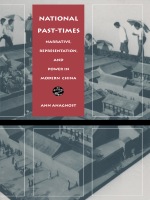 National Past-Times: Narrative, Representation, and Power in Modern China
Ann Anagnost
Duke University Press, 1997 In National Past-Times, Ann Anagnost explores the fashioning and refashioning of modern Chinese subjectivity as it relates to the literal and figurative body of the nation. In essays revealing the particular temporality of the modern Chinese nation-state, Anagnost examines the disparate eras of its recent past and its propensity for continually looking backward in order to face the future.
Using interviews and participant observation as well as close readings of official documents, propaganda materials, and popular media, Anagnost notes the discontinuities in the nation’s narrative—moments where this narrative has been radically reorganized at critical junctures in China’s modern history. Covering a broad range of issues relating to representation and power—issues that have presented themselves with particular clarity in the years since the violent crackdown on the student movement of 1989—National Past-Times critiques the ambiguous possibilities produced by the market, as well as new opportunities for "unfreedom" in the discipline of labor and the commodification of women. Anagnost begins with a retrospective reflection on the practice of "speaking bitterness" in socialist revolutionary practice. Subsequent essays discuss the culture debates of the 1980s, the discourse of social disorder, the issue of population control, the film The Story of Qiu Ju, and anomalies at the theme park "Splendid China."
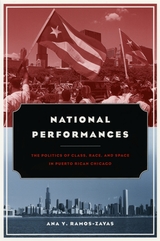 National Performances: The Politics of Class, Race, and Space in Puerto Rican Chicago
Ana Y. Ramos-Zayas
University of Chicago Press, 2003 In this book, Ana Y. Ramos-Zayas explores how Puerto Ricans in Chicago construct and perform nationalism. Contrary to characterizations of nationalism as a primarily unifying force, Ramos-Zayas finds that it actually provides the vocabulary to highlight distinctions along class, gender, racial, and generational lines among Puerto Ricans, as well as between Puerto Ricans and other Latino, black, and white populations.
Drawing on extensive ethnographic research, Ramos-Zayas shows how the performance of Puerto Rican nationalism in Chicago serves as a critique of social inequality, colonialism, and imperialism, allowing barrio residents and others to challenge the notion that upward social mobility is equally available to all Americans—or all Puerto Ricans. Paradoxically, however, these activists' efforts also promote upward social mobility, overturning previous notions that resentment and marginalization are the main results of nationalist strategies.
Ramos-Zayas's groundbreaking work allows her here to offer one of the most original and complex analyses of contemporary nationalism and Latino identity in the United States.
 National Politics in a Global Economy: The Domestic Sources of U.S. Trade Policy
Philip A. Mundo
Georgetown University Press, 1999 In our increasingly globalized world, U.S. trade policy stands at the intersection of foreign and domestic affairs. This book explains trade policy in terms of domestic politics, presenting a concise account of its origins and political significance. Although trade policy is a component of foreign policy, Philip A. Mundo explains how it is rooted in the domestic policy process and carries with it enormous implications for domestic affairs. He reviews the growing importance of trade policy since World War II — particularly over the past twenty years — and shows how recent policies like NAFTA are shaped by the domestic agenda. Mundo explains trade policy as the product of a three-stage process comprising agenda setting, program adoption, and implementation. He reviews this process in terms of the ideas that inform trade policy, the interests that seek to influence it, and the institutions that shape it. He also addresses the importance of specific measures, such as administrative relief and trade sanctions. This book distills the essence of the trade policy process into a concise, innovative framework accessible to students and general readers. With the growing importance of trade policy, it makes explicit many of the subtleties surrounding policymaking while fully explicating the legal and international context in which trade operates.
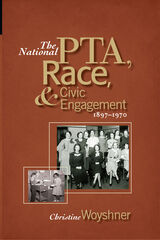 The National PTA, Race, and Civic Engagement, 1897–1970
Christine Woyshner
Ohio State University Press, 2009 Founded in 1897 as the National Congress of Mothers, the National Parent Teacher Association (PTA) was open to African American members but excluded them in practice. In 1926, a separate black PTA was created to serve the segregated schools of the American South. After the Brown v. Board of Education decision in 1954, black and white PTA leaders faced the difficult prospect of integrating all national, state, and local units, which resulted in a protracted unification process that lasted until 1970. In The National PTA, Race, and Civic Engagement, 1897–1970, Christine Woyshner examines the PTA in relation to its racial politics and as a venue for women’s civic participation in educational issues. Her argument is that the PTA allowed for discussions about race and desegregation when few other public spaces, even the schools, did so during this time. The PTA, the largest voluntary educational association in the twentieth century, has over the course of one hundred years lobbied for national legislation on behalf of children and families, played a role in shaping the school curriculum, and allowed for participation of diverse community members in dialogue about the goals of public schooling.
The National Question: Nationalism, Ethnic Conflict, and Self-Determination in the Twentieth Century
edited by Berch Berberoglu
Temple University Press, 1995 The class forces that have come to play a central role in directing movements in different socio-political, temporal, and geographic settings are explored in case studies of
* the political history of nationalist movements in Palestine, Kurdistan, South Africa, Northern Ireland, Puerto Rico, the Basque Country, and Quebec
* the role of the state in ethnic conflicts in India, China, the former Soviet Union, and the former Yugoslavia
*the role of women and issues of gender and class in Africa, the Middle East, and Central America.
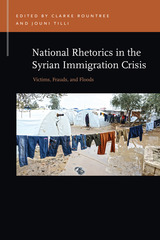 National Rhetorics in the Syrian Immigration Crisis: Victims, Frauds, and Floods
Clarke Rountree
Michigan State University Press, 2019 The Syrian refugee crisis seriously challenged countries in the Middle East, Europe, the United States, and elsewhere in the world. It provoked reactions from humanitarian generosity to anti-immigrant warnings of the destruction of the West. It contributed to the United Kingdom’s “Brexit” from the European Union and the election of Donald Trump as president of the United States. This book is a unique study of rhetorical responses to the crisis through a comparative approach that analyzes the discourses of leading political figures in ten countries, including gateway, destination, and tertiary countries for immigration, such as Turkey, several European countries, and the United States. These national discourses constructed the crisis and its refugees so as to welcome or shun them, in turn shaping the character and identity of the receiving countries, for both domestic and international audiences, as more or less humanitarian, nationalist, Muslim-friendly, Christian, and so forth. This book is essential reading for scholars wishing to understand how European and other countries responded to this crisis, discursively constructing refugees, themselves, and an emerging world order.
 National Romanticism: The Formation of National Movements
Miroslav Hroch
Central European University Press, 2007 67 texts, including hymns, manifestos, articles or extracts from lengthy studies exemplify the relation between Romanticism and the national movements in the cultural space ranging from Poland to the Ottoman Empire. Each text is accompanied by a presentation of the author, and by an analysis of the context in which the respective work was born.The end of the 18th century and first decades of the 19th were in many respects a watershed period in European history. The ideas of the Enlightenment and the dramatic convulsions of the French Revolution had shattered the old bonds and cast doubt upon the established moral and social norms of the old corporate society. In culture a new trend, Romanticism, was successfully asserting itself against Classicism and provided a new key for a growing number of activists to 're-imagine' their national community, reaching beyond the traditional frameworks of identification (such as the 'political nation', regional patriotism, or Christian universalism). The collection focuses on the interplay of Romantic cultural discourses and the shaping of national ideology throughout the 19th century, tracing the patterns of cultural transfer with Western Europe as well as the mimetic competition of national ideologies within the region.
 National Saving and Economic Performance
Edited by B. Douglas Bernheim and John B. Shoven
University of Chicago Press, 1991 The past decade has witnessed a decline in saving throughout the developed world—the United States has the dubious distinction of leading the way. The consequences can be serious. For individuals, their own economic security and that of their families is jeopardized. For society, inadequate rates of saving have been blamed for a variety of ills—decreasing the competitive abilities of American industry, slowing capital accumulation, increasing our trade deficit, and forcing the sale of capital stock to foreign investors at bargain prices. Restoring acceptable rates of saving in the United States poses a major challenge to those who formulate national economic policy, especially since economists and policymakers alike still understand little about what motivates people to save.
In National Saving and Economic Performance, edited by B. Douglas Bernheim and John B. Shoven, that task is addressed by offering the results of new research, with recommendations for policies aimed to improve saving. Leading experts in diverse fields of economics debate the need for more accurate measurement of official saving data; examine how corporate decisions to retain or distribute earnings affect household-level consumption and saving; and investigate the effects of taxation on saving behavior, correlations between national saving and international investment over time, and the influence of economic growth on saving.
Presenting the most comprehensive and up-to-date research on saving, this volume will benefit both academic and government economists.
 The National Security Enterprise: Navigating the Labyrinth
Roger Z. George and Harvey Rishikof, Editors. Foreword by Lt. Gen. Brent Scowcroft, USAF (Ret.)
Georgetown University Press, 2011 Recent breakdowns in American national security have exposed the weaknesses of the nation’s vast overlapping security and foreign policy bureaucracy and the often dysfunctional interagency process. In the literature of national security studies, however, surprisingly little attention is given to the specific dynamics or underlying organizational cultures that often drive the bureaucratic politics of U.S. security policy. The National Security Enterprise offers a broad overview and analysis of the many government agencies involved in national security issues, the interagency process, Congressional checks and balances, and the influence of private sector organizations. The chapters cover the National Security Council, the Departments of Defense and State, the Office of the Director of National Intelligence, the Central Intelligence Agency, the Federal Bureau of Investigation, the Department of Homeland Security, and the Office of Management and Budget. The book also focuses on the roles of Congress, the Supreme Court, and outside players in the national security process like the media, think tanks, and lobbyists. Each chapter details the organizational culture and personality of these institutions so that readers can better understand the mindsets that drive these organizations and their roles in the policy process. Many of the contributors to this volume are long-time practitioners who have spent most of their careers working for these organizations. As such, they offer unique insights into how diplomats, military officers, civilian analysts, spies, and law enforcement officials are distinct breeds of policymakers and political actors. To illustrate how different agencies can behave in the face of a common challenge, contributors reflect in detail on their respective agency’s behavior during the Iraq War. This impressive volume is suitable for academic studies at both the undergraduate and graduate level; ideal for U.S. government, military, and national security training programs; and useful for practitioners and specialists in national security studies.
 The National Security Enterprise: Navigating the Labyrinth, Second Edition
Roger Z. George and Harvey Rishikof, Editors
Georgetown University Press, 2017 This second edition of The National Security Enterprise provides practitioners’ insights into the operation, missions, and organizational cultures of the principal national security agencies and other institutions that shape the US national security decision-making process. Unlike some textbooks on American foreign policy, it offers analysis from insiders who have worked at the National Security Council, the State and Defense Departments, the intelligence community, and the other critical government entities. The book explains how organizational missions and cultures create the labyrinth in which a coherent national security policy must be fashioned. Understanding and appreciating these organizations and their cultures is essential for formulating and implementing it. Taking into account the changes introduced by the Obama administration, the second edition includes four new or entirely revised chapters (Congress, Department of Homeland Security, Treasury, and USAID) and updates to the text throughout. It covers changes instituted since the first edition was published in 2011, implications of the government campaign to prosecute leaks, and lessons learned from more than a decade of war in Afghanistan and Iraq. This up-to-date book will appeal to students of US national security and foreign policy as well as career policymakers.
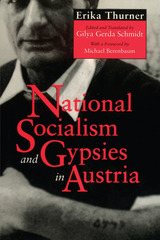 National Socialism and Gypsies in Austria
Erika Thurner
University of Alabama Press, 1998 Nazi policy toward Gypsies during the Third Reich
In this first English translation of Erika Thurner's National Socialism and Gypsies in Austria, Gilya Gerda Schmidt makes available Thurner’s investigation of Camps Salzburg and Lackenbach, the two central areas of Gypsy persecution in Austria. Two factors made Thurner’s research especially difficult: the Roma and Sinti have more an oral tradition than a written one, and scholarship on the plight of the Gypsies is sparse. Through painstaking research, Thurner has been able to piece together fragments from Nazi documents, recollections of victims, accounts of bystanders and other eyewitnesses, and formal records to present her account. The result is a volume that truly enhances our understanding of the Gypsies’ experiences during this period.
The volume also focuses on broader aspects of the Gypsies’ ordeals: the ideological foundations and legal ordinances regarding Gypsies, the discrimination and persecution in Burgenland as a whole, the transports from Austria to Lodz and Chelmo, and the medical experimentation. The book has also been expanded, with a new study of Camp Salzburg, an updated bibliography, and numerous photographs, which were not included in the German edition.
The recent upsurge of anti-Gypsy violence in Austria illustrates both the horror of the treatment of Gypsy tribes and the timeliness of the subject of this volume.
 The National Stage: Theatre and Cultural Legitimation in England, France, and America
Loren Kruger
University of Chicago Press, 1992 The idea of staging a nation dates from the Enlightenment, but the full force of the idea emerges only with the rise of mass politics. Comparing English, French, and American attempts to establish national theatres at moments of political crisis—from the challenge of socialism in late nineteenth-century Europe to the struggle to "salvage democracy" in Depression America—Kruger poses a fundamental question: in the formation of nationhood, is the citizen-audience spectator or participant?
The National Stage answers this question by tracing the relation between theatre institution and public sphere in the discourses of national identity in Britain, France, and the United States. Exploring the boundaries between history and theory, text and performance, this book speaks to theatre and social historians as well as those interested in the theoretical range of cultural studies.
National Tax Journal, volume 75 number 4 (December 2022)
The University of Chicago Press
University of Chicago Press Journals, 2022 This is volume 75 issue 4 of National Tax Journal. The goal of the National Tax Journal (NTJ) is to encourage and disseminate high quality original research on governmental tax and expenditure policies. The journal publishes peer reviewed articles that include economic, theoretical, and empirical analyses of tax and expenditure issues with an emphasis on policy implications. Each issue includes a Forum, which consists of invited papers by leading scholars that examine in depth a single current tax or expenditure policy issue. The NTJ has been published quarterly since 1948 under the auspices of the National Tax Association (NTA).
National Tax Journal, volume 76 number 1 (March 2023)
The University of Chicago Press
University of Chicago Press Journals, 2023 This is volume 76 issue 1 of National Tax Journal. The goal of the National Tax Journal (NTJ) is to encourage and disseminate high quality original research on governmental tax and expenditure policies. The journal publishes peer reviewed articles that include economic, theoretical, and empirical analyses of tax and expenditure issues with an emphasis on policy implications. Each issue includes a Forum, which consists of invited papers by leading scholars that examine in depth a single current tax or expenditure policy issue. The NTJ has been published quarterly since 1948 under the auspices of the National Tax Association (NTA).
National Tax Journal, volume 76 number 2 (June 2023)
The University of Chicago Press
University of Chicago Press Journals, 2023 This is volume 76 issue 2 of National Tax Journal. The goal of the National Tax Journal (NTJ) is to encourage and disseminate high quality original research on governmental tax and expenditure policies. The journal publishes peer reviewed articles that include economic, theoretical, and empirical analyses of tax and expenditure issues with an emphasis on policy implications. Each issue includes a Forum, which consists of invited papers by leading scholars that examine in depth a single current tax or expenditure policy issue. The NTJ has been published quarterly since 1948 under the auspices of the National Tax Association (NTA).
National Tax Journal, volume 76 number 3 (September 2023)
The University of Chicago Press
University of Chicago Press Journals, 2023 This is volume 76 issue 3 of National Tax Journal. The goal of the National Tax Journal (NTJ) is to encourage and disseminate high quality original research on governmental tax and expenditure policies. The journal publishes peer reviewed articles that include economic, theoretical, and empirical analyses of tax and expenditure issues with an emphasis on policy implications. Each issue includes a Forum, which consists of invited papers by leading scholars that examine in depth a single current tax or expenditure policy issue. The NTJ has been published quarterly since 1948 under the auspices of the National Tax Association (NTA).
National Tax Journal, volume 76 number 4 (December 2023)
The University of Chicago Press
University of Chicago Press Journals, 2023 This is volume 76 issue 4 of National Tax Journal. The goal of the National Tax Journal (NTJ) is to encourage and disseminate high quality original research on governmental tax and expenditure policies. The journal publishes peer reviewed articles that include economic, theoretical, and empirical analyses of tax and expenditure issues with an emphasis on policy implications. Each issue includes a Forum, which consists of invited papers by leading scholars that examine in depth a single current tax or expenditure policy issue. The NTJ has been published quarterly since 1948 under the auspices of the National Tax Association (NTA).
National Tax Journal, volume 77 number 1 (March 2024)
The University of Chicago Press
University of Chicago Press Journals, 2024 This is volume 77 issue 1 of National Tax Journal. The goal of the National Tax Journal (NTJ) is to encourage and disseminate high quality original research on governmental tax and expenditure policies. The journal publishes peer reviewed articles that include economic, theoretical, and empirical analyses of tax and expenditure issues with an emphasis on policy implications. Each issue includes a Forum, which consists of invited papers by leading scholars that examine in depth a single current tax or expenditure policy issue. The NTJ has been published quarterly since 1948 under the auspices of the National Tax Association (NTA).
National Tax Journal, volume 77 number 2 (June 2024)
The University of Chicago Press
University of Chicago Press Journals, 2024 This is volume 77 issue 2 of National Tax Journal. The goal of the National Tax Journal (NTJ) is to encourage and disseminate high quality original research on governmental tax and expenditure policies. The journal publishes peer reviewed articles that include economic, theoretical, and empirical analyses of tax and expenditure issues with an emphasis on policy implications. Each issue includes a Forum, which consists of invited papers by leading scholars that examine in depth a single current tax or expenditure policy issue. The NTJ has been published quarterly since 1948 under the auspices of the National Tax Association (NTA).
National Tax Journal, volume 77 number 3 (September 2024)
The University of Chicago Press
University of Chicago Press Journals, 2024 This is volume 77 issue 3 of National Tax Journal. The goal of the National Tax Journal (NTJ) is to encourage and disseminate high quality original research on governmental tax and expenditure policies. The journal publishes peer reviewed articles that include economic, theoretical, and empirical analyses of tax and expenditure issues with an emphasis on policy implications. Each issue includes a Forum, which consists of invited papers by leading scholars that examine in depth a single current tax or expenditure policy issue. The NTJ has been published quarterly since 1948 under the auspices of the National Tax Association (NTA).
National Tax Journal, volume 77 number 4 (December 2024)
The University of Chicago Press
University of Chicago Press Journals, 2024 This is volume 77 issue 4 of National Tax Journal. The goal of the National Tax Journal (NTJ) is to encourage and disseminate high quality original research on governmental tax and expenditure policies. The journal publishes peer reviewed articles that include economic, theoretical, and empirical analyses of tax and expenditure issues with an emphasis on policy implications. Each issue includes a Forum, which consists of invited papers by leading scholars that examine in depth a single current tax or expenditure policy issue. The NTJ has been published quarterly since 1948 under the auspices of the National Tax Association (NTA).
National Tax Journal, volume 78 number 1 (March 2025)
The University of Chicago Press
University of Chicago Press Journals, 2025 This is volume 78 issue 1 of National Tax Journal. The goal of the National Tax Journal (NTJ) is to encourage and disseminate high quality original research on governmental tax and expenditure policies. The journal publishes peer reviewed articles that include economic, theoretical, and empirical analyses of tax and expenditure issues with an emphasis on policy implications. Each issue includes a Forum, which consists of invited papers by leading scholars that examine in depth a single current tax or expenditure policy issue. The NTJ has been published quarterly since 1948 under the auspices of the National Tax Association (NTA).
National Tax Journal, volume 78 number 2 (June 2025)
The University of Chicago Press
University of Chicago Press Journals, 2025 This is volume 78 issue 2 of National Tax Journal. The goal of the National Tax Journal (NTJ) is to encourage and disseminate high quality original research on governmental tax and expenditure policies. The journal publishes peer reviewed articles that include economic, theoretical, and empirical analyses of tax and expenditure issues with an emphasis on policy implications. Each issue includes a Forum, which consists of invited papers by leading scholars that examine in depth a single current tax or expenditure policy issue. The NTJ has been published quarterly since 1948 under the auspices of the National Tax Association (NTA).
National Tax Journal, volume 78 number 3 (September 2025)
The University of Chicago Press
University of Chicago Press Journals, 2025 This is volume 78 issue 3 of National Tax Journal. The goal of the National Tax Journal (NTJ) is to encourage and disseminate high quality original research on governmental tax and expenditure policies. The journal publishes peer reviewed articles that include economic, theoretical, and empirical analyses of tax and expenditure issues with an emphasis on policy implications. Each issue includes a Forum, which consists of invited papers by leading scholars that examine in depth a single current tax or expenditure policy issue. The NTJ has been published quarterly since 1948 under the auspices of the National Tax Association (NTA).
National Thought in Europe: A Cultural History
Joep Leerssen
Amsterdam University Press, 2007 Ranging widely across countries and centuries, National Thought in Europe critically analyzes the growth of nationalism from its beginnings in medieval ethnic prejudice to the romantic era’s belief in a national soul. A fertile pan-European exchange of ideas, often rooted in literature, led to a notion of a nation’s cultural individuality that transformed the map of Europe. By looking deeply at the cultural contexts of nationalism, Joep Leerssen not only helps readers understand the continent’s past, but he also provides a surprising perspective on contemporary European identity politics.
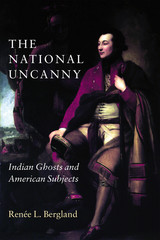 The National Uncanny: Indian Ghosts and American Subjects
Renée L. Bergland
Dartmouth College Press, 2000 Although spectral Indians appear with startling frequency in US literary works, until now the implications of describing them as ghosts have not been thoroughly investigated. In the first years of nationhood, Philip Freneau and Sarah Wentworth Morton peopled their works with Indian phantoms, as did Charles Brocken Brown, Washington Irving, Samuel Woodworth, Lydia Maria Child, James Fenimore Cooper, William Apess, Nathaniel Hawthorne, and others who followed. During the late 19th and early 20th centuries, Native American ghosts figured prominently in speeches attributed to Chief Seattle, Black Elk, and Kicking Bear. Today, Stephen King and Leslie Marmon Silko plot best-selling novels around ghostly Indians and haunted Indian burial grounds. Renée L. Bergland argues that representing Indians as ghosts internalizes them as ghostly figures within the white imagination. Spectralization allows white Americans to construct a concept of American nationhood haunted by Native Americans, in which Indians become sharers in an idealized national imagination. However, the problems of spectralization are clear, since the discourse questions the very nationalism it constructs. Indians who are transformed into ghosts cannot be buried or evaded, and the specter of their forced disappearance haunts the American imagination. Indian ghosts personify national guilt and horror, as well as national pride and pleasure. Bergland tells the story of a terrifying and triumphant American aesthetic that repeatedly transforms horror into glory, national dishonor into national pride.
 The National Wildlife Refuges: Coordinating A Conservation System Through Law
Robert L. Fischman
Island Press, 2003 The National Wildlife Refuges provides a comprehensive examination of the laws and policies governing management of the national wildlife refuges, offering for the first time a practical description and analysis of the management regime outlined in the 1997 National Wildlife Refuge System Improvement Act. The 1997 act is the first new statute governing a system of federal public lands enacted since the 1970s. The evolution of law governing the refuge system parallels broader trends in public land management and environmental protection, making the refuge system a valuable case study for those interested in environmental management, policy, and law. The book: - describes the National Wildlife Refuge System and its legal history
- offers a detailed breakdown of the 1997 act, including its purpose, designated uses, comprehensive planning provisions, substantive management criteria, and public participation aspects
- considers individual refuges and specific issues that apply to only certain refuges
- discusses oil and gas development in refuges
- offers observations about how well the refuge system law resolves historic tensions and achieves modern conservation goals
A separate chapter examines the special rules governing refuges in Alaska and considers the contentious debate over the Arctic National Wildlife Refuge. Appendixes offer a reference of acronyms and abbreviations, a chronology of the refuge system's development, key statutory provisions (including the full text of the 1997 act), and basic information about each national wildlife refuge. With an approach to conservation that is increasingly prevalent around the world, the National Wildlife Refuge System is an important model for sustainable resource management, and the book's analyses of the refuge system's ecological management criteria, conflicts between primary and subsidiary uses, and tension between site-specific standards and uniform national goals all offer important lessons for environmental governance generally.
National Will to Fight: Why Some States Keep Fighting and Others Don’t
McNerney
RAND Corporation, 2018 In this report, RAND researchers explore the factors, contexts, and mechanisms that shape a national government’s decision to continue or end military and other operations during a conflict (i.e., national will to fight). To help U.S. leaders better understand and influence will to fight, the researchers propose an exploratory model of 15 variables that can be tailored and applied to a wide set of conflict scenarios.
Nationalism
Craig Calhoun
University of Minnesota Press, 1998
 Nationalism and Beyond: Introducing Moral Debate about Values
Nenad Mišcevic
Central European University Press, 2001 A very readable introduction to the concepts and principles shaping the philosophical debate around nationalism. The book provides portraits of two kinds of nationalists: the tougher type, more common in everyday life, and the ultra-moderate "liberal nationalist" encountered in academia. The author introduces a debate with a "thoughtful nationalist," one who defends the view that states should be organized around national culture and that individuals have basic obligations to their nation. The author attempts to answer his opponent's standard arguments and presents a fully documented critique of his views. A passion born from Miscevic's encounter with nationalism in the former Yugoslavia glows from every line of the argument. Questions raised and discussed include: Why is radicalism typical of nationalism? How successful is the nation-state? Does nationalism support liberal-democratic values? Is membership in a nation necessary for human fulfillment and for understanding values? Why might nationalism be immoral? The book is unique not only because it explains a contemporary moral debate, in terms clear to the non-philosopher reader, but also because it has been written from the perspective of Central and Eastern Europe based on the author's personal experience.
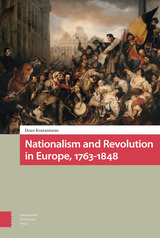 Nationalism and Revolution in Europe, 1763-1848
Dean Kostantaras
Amsterdam University Press, 2020 Nationalism and Revolution in Europe, 1763-1848 addresses enduring historiographical problems concerning the appearance of the first national movements in Europe and their role in the crises associated with the Age of Revolution. Considerable detail is supplied to the picture of Enlightenment era intellectual and cultural pursuits in which the nation was featured as both an object of theoretical interest and site of practice. In doing so, the work provides a major corrective to depictions of the period characteristic of earlier ventures -- including those by authors as notable as Hobsbawm, Gellner, and Anderson -- while offering an advance in narrative coherence by portraying how developments in the sphere of ideas influenced the terms of political debate in France and elsewhere in the years preceding the upheavals of 1789-1815. Subsequent chapters explore the composite nature of the revolutions which followed and the challenges of determining the relative capacity of the three chief sources of contemporary unrest -- constitutional, national, and social -- to inspire extra-legal challenges to the Restoration status quo.
Nationalism and Sexuality: Middle-Class Morality and Sexual Norms in Modern Europe
George L. Mosse, With a critical introduction by Mary Louise Roberts
University of Wisconsin Press, 2020 This landmark work by George L. Mosse, first published in 1985, examines the history of sexuality through the lens of bourgeois respectability and nationalism. Using a daring breadth of German and English sources, Nationalism and Sexuality pioneered the use of gender stereotypes as a methodology for studying the history of sexuality in mainstream European history. Mosse’s innovative inquiries on gender remain central to discussions about modern constructions of national belonging and the workings of the state. This edition of Mosse’s classic volume includes a new critical introduction by Mary Louise Roberts, whose books include What Soldiers Do: Sex and the American GI in World War II France.
 Nationalism and Terror: Ante Pavelic and Ustasha Terrorism from Fascism to the Cold War
Giorgio Cingolani
Central European University Press, 2018 This book covers the full story of the Ustasha, a fascist movement in Croatia, from its historic roots to its downfall. The authors address key questions: In what international context did Ustasha terrorism grow and develop? How did this movement rise to power, and then exterminate hundreds of thousands of innocents? Who was Ante Pavelic, its leader? Was he a shrewd politician, able to exploit for his independent project Mussolini's imperial ambitions, Hitler's pan-German aims, and the anti-Bolshevism of the Holy See and the Western bloc? Or was he, consciously or not, a pawn in other hands, in a complex international scenario where Croatia was only arena among many? And after the movement's collapse, how were several of the most prominent Ustasha leaders able to evade capture by Tito’s victorious army? The book places the appearance of the Ustasha movement not only in the context of the interwar Kingdom of Yugoslavia but also in the wider perspective of the emergence of European fascism.
 Nationalism and the Economy: Explorations into a Neglected Relationship
Stefan Berger
Central European University Press, 2019 This book is the first attempt to bridge the current divide between studies addressing "economic nationalism" as a deliberate ideology and movement of economic 'nation-building', and the literature concerned with more diffuse expressions of economic "nationness"—from national economic symbols and memories, to the "banal" world of product communication. The editors seeks to highlight the importance of economic issues for the study of nations and nationalism, and its findings point to the need to give economic phenomena a more prominent place in the field of nationalism studies. The authors of the essays come from disciplines as diverse as economic and cultural history, political science, business studies, as well as sociology and anthropology. Their chapters address the nationalism-economy nexus in a variety of realms, including trade, foreign investment, and national control over resources, as well as consumption, migration, and welfare state policies. Some of the case studies have a historical focus on nation-building in the nineteenth and early twentieth centuries, while others are concerned with contemporary developments. Several contributions provide in-depth analyses of single cases while others employ a comparative method. The geographical focus of the contributions vary widely, although, on balance, the majority of our authors deal with European countries.
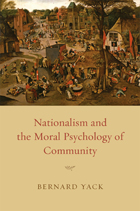 Nationalism and the Moral Psychology of Community
Bernard Yack
University of Chicago Press, 2012 Nationalism is one of modern history’s great surprises. How is it that the nation, a relatively old form of community, has risen to such prominence in an era so strongly identified with the individual? Bernard Yack argues that it is the inadequacy of our understanding of community—and especially the moral psychology that animates it—that has made this question so difficult to answer.
Yack develops a broader and more flexible theory of community and shows how to use it in the study of nations and nationalism. What makes nationalism such a powerful and morally problematic force in our lives is the interplay of old feelings of communal loyalty and relatively new beliefs about popular sovereignty. By uncovering this fraught relationship, Yack moves our understanding of nationalism beyond the oft-rehearsed debate between primordialists and modernists, those who exaggerate our loss of individuality and those who underestimate the depth of communal attachments.
A brilliant and compelling book, Nationalism and the Moral Psychology of Community sets out a revisionist conception of nationalism that cannot be ignored.
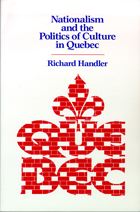 Nationalism and the Politics of Culture in Quebec
Richard Handler
University of Wisconsin Press, 1988 Richard Handler’s pathbreaking study of nationalistic politics in Quebec is a striking and successful example of the new experimental type of ethnography, interdisciplinary in nature and intensively concerned with rhetoric and not only of anthropologists but also of scholars in a wide range of fields, and it is likely to stir sharp controversy.
Bringing together methodologies of history, sociology, political science, and philosophy, as well as anthropology, Handler centers on the period 1976–1984, during which the independantiste Parti Québéois was in control of the provincial government and nationalistic sentiment was especially strong. Handler draws on historical and archival research, and on interviews with Quebec and Canadian government officials, as he addresses the central question: Given the similarities between the epistemologies of both anthropology and nationalist ideology, how can one write an ethnography of nationalism that does not simply reproduce—and thereby endorse—nationalistic beliefs? Handler analyzes various responses to the nationalist vision of a threatened existence. He examines cultural tourism, ideology of the Quebec government, legislations concerning historical preservation, language legislation and policies towards immigrants and “cultural minorities.” He concludes with a thoughtful meditation on the futility of nationalisms.
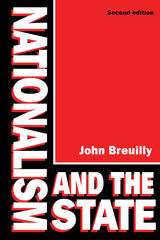 Nationalism and the State
John Breuilly
University of Chicago Press, 1993 Since its publication this important study has become established as a central work on the vast and contested subject of modern nationalism. Placing historical evidence within a general theoretical framework, John Breuilly argues that nationalism should be understood as a form of politics that arises in opposition to the modern state. In this updated and revised edition, he extends his analysis to the most recent developments in central Europe and the former Soviet Union. He also addresses the current debates over the meaning of nationalism and their implications for his position.
Breuilly challenges the conventional view that nationalism emerges from a sense of cultural identity. Rather, he shows how elites, social groups, and foreign governments use nationalist appeals to mobilize popular support against the state. Nationalism, then, is a means of creating a sense of identity. This provocative argument is supported with a wide-ranging analysis of pertinent examples—national opposition in early modern Europe; the unification movement in Germany, Italy, and Poland; separatism under the Hapsburg and Ottoman empires; fascism in Germany, Italy, and Romania; post-war anti-colonialism and the nationalist resurgence following the breakdown of Soviet power.
Still the most comprehensive and systematic historical comparison of nationalist politics, Nationalism and the State is an indispensable book for anyone seeking to understand modern politics.
Nationalism, Colonialism, and Literature
Terry Eagleton
University of Minnesota Press, 1990 The three essays constituting this volume were originally published as individual pamphlets by the Field Day Theatre Company, in Derry, Northern Ireland. Each deals with the question of nationalism and the role of cultural production as a force in understanding and analyzing the aftermath of colonization. The authors’ diverse perspectives are demonstrated by the essays’ respective titles: Eagleton, Nationalism: Irony and Commitment; Jameson, Modernism and Imperialism; and Said, Yeats and Decolonization. The essays have implication beyond their immediate topics, bearing upon questions of feminism, decolonization, and modernism to illuminate problems that belong to other groups and regions.
 Nationalism: Five Roads to Modernity
Liah Greenfeld
Harvard University Press, 1992 Nationalism is a movement and a state of mind that brings together national identity, consciousness, and collectivities. It accomplished the great transformation from the old order to modernity; it placed imagination above production, distribution, and exchange; and it altered the nature of power over people and territories that shapes and directs the social and political world. A five-country study that spans five hundred years, this historically oriented work in sociology bids well to replace all previous works on the subject. The theme, simple yet complex, suggests that England was the front-runner, with its earliest sense of self-conscious nationalism and its pragmatic ways; it utilized existing institutions while transforming itself. The Americans followed, with no formed institutions to impede them. France, Germany, and Russia took the same, now marked, path, modifying nationalism in the process.
Nationalism is based on empirical data in four languages—legal documents; period dictionaries; memoirs; correspondence; literary works; theological, political, and philosophical writings; biographies; statistics; and histories. Nowhere else is the complex interaction of structural, cultural, and psychological factors so thoroughly explained. Nowhere else are concepts like identity, anomie, and elites brought so refreshingly to life.
 Nationalism in Architecture of Modern Iran
Niloofar Kakhi
Gingko, 2023 A historical account of the development of nationalism in Iranian architecture between 1905 and 2015.
Nationalism in Architecture of Modern Iran is the first comprehensive book on modern architecture in Iran to be published in English. It addresses the relationship between nationalism and architecture in Iran and discusses the role Western architects played in the development of modern architecture in the country while introducing some of the most significant and recent projects in Iran. It investigates what it means to design a building that bears an Iranian or Islamic-Iranian identity and how to construct a conceptual platform for critically assessing representations of national identity in contemporary architecture. This book will directly help practicing architects and policymakers of the built environment, especially in Iran, as well as give a comprehensive understanding of the modern history of architecture in Iran to art historians and a broader audience. It introduces some of the most significant and recent projects in Iran for the first time.
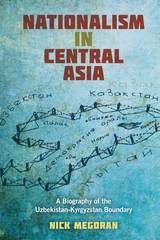 Nationalism in Central Asia: A Biography of the Uzbekistan-Kyrgyzstan Boundary
Nick Megoran
University of Pittsburgh Press, 2017 Nick Megoran explores the process of building independent nation-states in post-Soviet Central Asia through the lens of the disputed border territory between Uzbekistan and Kyrgyzstan. In his rich "biography" of the boundary, he employs a combination of political, cultural, historical, ethnographic, and geographic frames to shed new light on nation-building process in this volatile and geopolitically significant region.
Megoran draws on twenty years of extensive research in the borderlands via interviews, observations, participation, and newspaper analysis. He considers the problems of nationalist discourse versus local vernacular, elite struggles versus borderland solidarities, boundary delimitation versus everyday experience, border control versus resistance, and mass violence in 2010, all of which have exacerbated territorial anxieties. Megoran also revisits theories of causation, such as the loss of Soviet control, poorly defined boundaries, natural resource disputes, and historic ethnic clashes, to show that while these all contribute to heightened tensions, political actors and their agendas have clearly driven territorial aspirations and are the overriding source of conflict. As this compelling case study shows, the boundaries of the The Ferghana Valley put in succinct focus larger global and moral questions of what defines a good border.
Nationalism in India: Past and Present
Irfan Habib
Seagull Books, 2023 A persuasive redefinition of nationalism by one of the most eminent historians of India.
What makes a people living in a mere “geographical expression” a nation? From the French Revolution onwards, the word “nation” came to denote a people who wish to be collectively free. But free from what—colonial rule and inequality? Or religious and cultural diversity?
In this timely and succinct essay, Irfan Habib charts India’s struggle to consolidate a nationalist identity, to identify what it sought to be free from. Even as the colonial regime denied the very possibility of nationalism in the subcontinent, opposition to British rule fomented just such a sentiment. But resistance against colonial exploitation alone could not unify the Indian people. Internal inequalities—caste, poverty, religious bigotry—remained (and still remain) to be tackled.
Nationalism in Iran: Updated Through 1978
Richard W. Cottam
University of Pittsburgh Press, 1979
For a brief period in the early 1950s, Iranian nationalism captured the world's attention as, under the leadership of Mohammad Mossadeq, the Iranian National Movement tried to liberate Iran from British imperialism. Regarding nationalism as a major determinant of the attitudes and loyalties of those who embrace it, Cottam analyzes the complex religious, national, and social values at work within Iran and examines, more generally, the turbulence of nationalism in developing states and its perplexing problems for American foreign policy.
In a new 40-page chapter, added in 1978, Cottam updated his pioneering study by examining the condition of Iran fifteen years after his first analysis-from its rapid economic growth as an oil producer to Shah Mohammad Reza Pahlavi's unsuccessful efforts to rouse nationalistic sentiment in his favor.
Nationalismes, antisémitismes et débats autour de l’art juif: De quelques critiques d’art au temps de l’École de Paris (1925–1933)
Alessandro Gallicchio
Diaphanes, 2023 Dans l’entre-deux-guerres à Paris, au moment où une frange d’intellectuels unit ses voix aux mouvements nationalistes, des critiques d’art gravitant autour de l’École de Paris prennent des positions esthétiques et idéologiques parfois déroutantes. L’ouvrage examine les motivations personnelles, communautaires et sociales des diverses plumes qui ont débattu la question d’un « art juif » et de son éventuel caractère « ethnique ». Il étoffe notre compréhension de la politisation des discours sur l’art, sans céder à une vision simplificatrice ou binaire : à l’heure de la montée des fascismes, certains critiques d’art se sont adaptés aux circonstances, reflétant les glissements et les instabilités de l’époque.
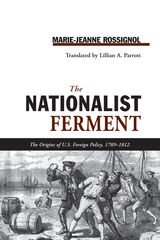 NATIONALIST FERMENT: ORIGINS OF U.S. FOREIGN POLICY, 1789-1812
MARIE-JEANNE ROSSIGNOL
Ohio State University Press, 2003 This book was published in June 1994 by a French publisher and became the winner of the Organization of American Historians foreign language book prize. The Nationalist Ferment contributes significantly to the renewal of early U.S. diplomatic history. Since the 1980s, a number of diplomatic historians have turned aside from traditional diplomatic issues and sources. They have instead focused on gender, ethnic relationships, culture, and the connections between foreign and domestic policy. Rossignol argues that in the years 1789–1812 the new nation needed to assert its independence and autonomous character in the face of an unconvinced world. After overcoming initial divisions caused by foreign policy, Americans met this challenge by defining common foreign policy objectives and attitudes, which both legitimized the United States abroad and reinforced national unity at home. This book establishes the constant connections between domestic and international issues during the early national period.
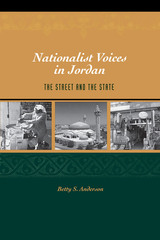 Nationalist Voices in Jordan: The Street and the State
By Betty S. Anderson
University of Texas Press, 2005 According to conventional wisdom, the national identity of the Jordanian state was defined by the ruling Hashemite family, which has governed the country since the 1920s. But this view overlooks the significant role that the "Arab street"—in this case, ordinary Jordanians and Palestinians—played and continues to play in defining national identity in Jordan and the Fertile Crescent as a whole. Indeed, as this pathfinding study makes clear, "the street" no less than the state has been a major actor in the process of nation building in the Middle East during and after the colonial era. In this book, Betty Anderson examines the activities of the Jordanian National Movement (JNM), a collection of leftist political parties that worked to promote pan-Arab unity and oppose the continuation of a separate Jordanian state from the 1920s through the 1950s. Using primary sources including memoirs, interviews, poetry, textbooks, and newspapers, as well as archival records, she shows how the expansion of education, new jobs in the public and private sectors, changes in economic relationships, the establishment of national militaries, and the explosion of media outlets all converged to offer ordinary Jordanians and Palestinians (who were under the Jordanian government at the time) an alternative sense of national identity. Anderson convincingly demonstrates that key elements of the JNM's pan-Arab vision and goals influenced and were ultimately adopted by the Hashemite elite, even though the movement itself was politically defeated in 1957.
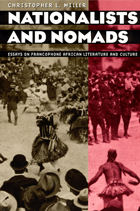 Nationalists and Nomads: Essays on Francophone African Literature and Culture
Christopher L. Miller
University of Chicago Press, 1999 How does African literature written in French change the way we think about nationalism, colonialism, and postcolonialism? How does it imagine the encounter between Africans and French? And what does the study of African literature bring to the fields of literary and cultural studies? Christopher L. Miller explores these and other questions in Nationalists and Nomads.
Miller ranges from the beginnings of francophone African literature—which he traces not to the 1930s Negritude movement but to the largely unknown, virulently radical writings of Africans in Paris in the 1920s—to the evolving relations between African literature and nationalism in the 1980s and 1990s. Throughout he aims to offset the contemporary emphasis on the postcolonial at the expense of the colonial, arguing that both are equally complex, with powerful ambiguities. Arguing against blanket advocacy of any one model (such as nationalism or hybridity) to explain these ambiguities, Miller instead seeks a form of thought that can read and recognize the realities of both identity and difference.
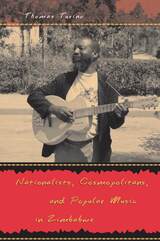 Nationalists, Cosmopolitans, and Popular Music in Zimbabwe
Thomas Turino
University of Chicago Press, 2000 Hailed as a national hero and musical revolutionary, Thomas Mapfumo, along with other Zimbabwean artists, burst onto the music scene in the 1980s with a unique style that combined electric guitar with indigenous Shona music and instruments. The development of this music from its roots in the early Rhodesian era to the present and the ways this and other styles articulated with Zimbabwean nationalism is the focus of Thomas Turino's new study. Turino examines the emergence of cosmopolitan culture among the black middle class and how this gave rise to a variety of urban-popular styles modeled on influences ranging from the Mills Brothers to Elvis. He also shows how cosmopolitanism gave rise to the nationalist movement itself, explaining the combination of "foreign" and indigenous elements that so often define nationalist art and cultural projects. The first book-length look at the role of music in African nationalism, Turino's work delves deeper than most books about popular music and challenges the reader to think about the lives and struggles of the people behind the surface appeal of world music.
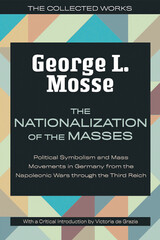 The Nationalization of the Masses: Political Symbolism and Mass Movements in Germany from the Napoleonic Wars Through the Third Reich
George L. Mosse
University of Wisconsin Press, 2023 First published in 1975, The Nationalization of the Masses is George L. Mosse’s major statement about political symbols and the means of their diffusion. Focusing on Germany and, to a lesser degree, France and Italy, Mosse analyzes the role of symbols in fueling mass politics, mass movements, and nationalism in a way that is broadly applicable and as relevant today as it was almost fifty years ago. In this analysis Mosse introduces terms like “secular religion,” “political liturgy,” “national mystique,” “the new politics,” and “the aesthetics of politics” that are now standard in studies of nationalism and fascism, demonstrating the importance of his cultural, anthropologically informed lens to contemporary discourse. This new edition contains a critical introduction by Victoria de Grazia, Moore Collegiate Professor of History at Columbia University, contextualizing Mosse’s research and exploring its powerful influence on subsequent generations of historians.
Nationalizing a Borderland: War, Ethnicity, and Anti-Jewish Violence in East Galicia, 1914–1920
Alexander Victor Prusin
University of Alabama Press, 2005 Nationalizing a Borderland enriches understanding of ethnic conflict by examining the factors in the Austro-Hungarian province of Galicia between 1914 and 1920 that led to the rise of xenophobic nationalism and to the ethnocide of World War II. From Russian, Polish, Ukrainian, and Austrian archival sources, Prusin argues that while the violence inflicted upon Jews during that period may at first seem irrational and indiscriminate, a closer examination reveals that it was generated by traditional antisemitism and by the security concerns of the Russian and Polish militaries in the front zone. This violence, Prusin contends, served as a means of reshaping the socio-economic and political space of the province by diminishing Jewish cultural and economic influence.
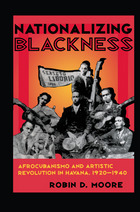 Nationalizing Blackness: Afrocubanismo and Artistic Revolution in Havana, 1920–1940
Robin Dale Moore
University of Pittsburgh Press, 1997
Nationalizing Blackness uses the music of the 1920s and 1930s to examine Cuban society as it begins to embrace Afrocuban culture. Moore examines the public debate over “degenerate Africanisms” associated with comparas or carnival bands; similar controversies associated with son music; the history of blackface theater shows; the rise of afrocubanismo in the context of anti-imperialist nationalism and revolution against Gerardo Machado; the history of cabaret rumba; an overview of poetry, painting, and music inspired by Afrocuban street culture; and reactions of the black Cuban middle classes to afrocubanismo. He has collected numerous illustrations of early twentieth-century performers in Havana, many included in this book.
Nationalizing Blackness represents one of the first politicized studies of twentieth-century culture in Cuba. It demonstrates how music can function as the center of racial and cultural conflict during the formation of a national identity.
Nationalizing Empires
Stefan Berger
Central European University Press, 2015 The essays in Nationalizing Empires challenge the dichotomy between empire and nation state that for decades has dominated historiography. The authors center their attention on nation-building in the imperial core and maintain that the nineteenth century, rather than the age of nation-states, was the age of empires and nationalism. They identify a number of instances where nation building projects in the imperial metropolis aimed at the preservation and extension of empires rather than at their dissolution or the transformation of entire empires into nation states. Such observations have until recently largely escaped theoretical reflection.
 Nationalizing the Russian Empire: The Campaign against Enemy Aliens during World War I
Eric Lohr
Harvard University Press, 2003 In this compelling study of the treatment of "enemy" minorities in the Russian Empire during the First World War, Eric Lohr uncovers a dramatic story of mass deportations, purges, expropriations, and popular violence.A campaign initially aimed at restricting foreign citizens rapidly spun out of control. It swept up Russian subjects of German, Jewish, and Muslim backgrounds and drove roughly a million civilians from one part of the empire to another, resulting in one of the largest cases of forced migration in history to that time. Because foreigners and diaspora minorities were prominent among entrepreneurial and landowning elites, the campaign against them also became an explosive element in class and national tensions on the eve of the 1917 revolutions.
During the war, the imperial regime dropped its ambivalence about Russian nationalism and embraced unprecedented and radical policies that "nationalized" the economy, the land, and even the population. The core idea of the campaign--that the country needed to free itself from the domination of foreigners, internal enemies, and the exploitative world economic system--later became a central feature of the Soviet revolutionary model.
Based on extensive archival research, much in newly available sources, Nationalizing the Russian Empire is an important contribution to the study of empire and nationalism, the Russian Revolution, and ethnic cleansing.
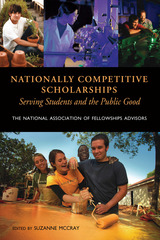 Nationally Competitive Scholarships: Serving Students and the Public Good
Suzanne McCray
University of Arkansas Press, 2007 Guidance for students applying for national scholarships Nationally competitive scholarship programs attract thousands of applicants every year for a relatively small number of awards. Providing informed and dedicated support to applicants is the critical and fundamental goal of the National Association of Fellowships Advisors (NAFA). The thirteen essays in this volume are a direct result of the 2005 NAFA conference held in Louisville. Contributors include both scholarship advisors and representatives of the Truman and Marshall foundations as well as the former executive director of the US-UK Fulbright Commission. These essays provide practical information ranging from helping faculty write persuasive letters of recommendation to serving international students effectively to negotiating the British and Irish high-educational systems. In addition to providing the students with useful tips, these essays also reflect on the broader impact of the application process. They address the successes of students who do not win as well as the public-service involvement of those who do as they give back to their campus, local, and global communities.
 Nation-Building: A Key Concept For Peaceful Conflict Transformation?
Jochen Hippler
Pluto Press, 2005 The term 'nation-building' has experienced a remarkable renaissance since the early 1990s. It has been used to describe and to justify the military interventions in Somalia, Afghanistan and Iraq. Linked to the idea of 'failed' or 'failing' states, the concept is used to hide and legitimise a whole range of diverse policies, allowing foreign powers to control and reshape countries in areas of conflict.
Currently the international debate on nation-building is heavily dominated by US actors and authors, especially by writers connected to the Bush administration or its policies. This book presents academic and political alternatives, presenting a critical view from 'Old Europe'.
The book combines academic research and analysis with policy orientation, with contributors from both fields. It clarifies the terminology distinguishing developmental, peace-related, imperial and analytical approaches to nation-building. Highlighting its connections to globalisation, democracy, ethnic and religious minorities, the contributors consider case studies such as Somalia, the Balkans, Afghanistan, Iraq, and Nigeria.
Dr. Jochen Hippler, Political Scientist at the University of Duisburg-Essen and its Institute for Development and Peace (INEF), specialises in regional conflicts and interventionism in the Third World, political identities, and the Middle East. He is the former Director of the Transnational Institute in Amsterdam and the author of numerous books and articles including Pax Americana (Pluto Press 1994), The Democratisation of Disempowerment (Pluto Press 1995) and The Next Threat (Pluto Press 1995).
Nationbuilding and the Politics of Nationalism: Essays on Austrian Galicia
Andrei S. Markovits
Harvard University Press The province of Galicia was the easternmost land of the old Habsburg Empire. Throughout the nineteenth century it was noted for political conflicts and the cultural vibrancy of its three major national groups: Poles, Ukrainians, and Jews.
This volume brings together for the first time eleven essays on various aspects of the last seventy-five years of Austrian Galicia's existence. Included are general surveys on Galicia within the imperial Habsburg system and on the fate of Ukrainians, Poles, and Jews within the province. Various aspects of Ukrainian development receive special attention, and a major bibliographic essay completes the volume. Among the leading specialists represented are Peter Brock, Paul R. Magocsi, Ezra Mendelsohn, Ivan L. Rudnytsky, and Piotr Wandycz.
Nation-Building as Necessary Effort in Fragile States
René Grotenhuis
Amsterdam University Press, 2016 Policies intended to bring stability to fragile states tend to focus almost exclusively on building institutions and systems to get governance right. Simply building the state is often seen as sufficient for making it stable and legitimate. But policies like these, René Grotenhuis shows in this book, ignore the question of what makes people belong to a nation-state, arguing that issues of identity, culture, and religion are crucial to creating the sense of belonging and social cohesion that a stable nation-state requires.
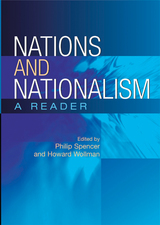 Nations and Nationalism: A Reader
Spencer, Philip
Rutgers University Press, 2005 Nationalism has become a topic of wide-ranging significance and heated debate over recent years, with a huge expansion in the amount of literature available. Bringing together the best and most representative of these writings, Nations and Nationalism is an essential reader for students of political theory and related fields. Assembled by two influential scholars, the volume includes the core, basic texts required for any course on nationalism, along with a selection of less well-known contributions that illuminates the debates. Articles and chapters cover the origins, different types, and concepts of nationalism; its relationship with race, gender, and ethnicity; the impact of globalization, post-communism, and migration; and debates about citizenship and self-determination. Classic writers such as Ernest Gellner, Anthony Smith, Benedict Anderson, and John Breuilly are represented along with younger scholars who have played a critical role in reshaping contemporary attitudes toward the topic. Selected writings by historians, sociologists, and anthropologists supplement contributions from political scientists so that students will be able to compare theories and debates across a range of disciplines and time periods. Taken together, the chapters provide a balanced and vivid overview of how nationalism has exploded as a topic of inquiry over the last two decades and how it has interacted with other political and social forces.
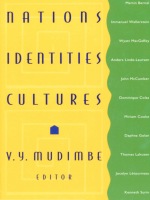 Nations, Identities, Cultures
V. Y. Mudimbe, ed.
Duke University Press, 1997 This volume investigates the concepts of nation, identity, and culture as they have evolved within the contexts of exile and as a result of the consolidation of the ethnic and the political. The contributors explore various theoretical issues involved in reconfiguring these concepts since the nineteenth century, as well as the manifestations of these issues in specific regions of the world. Examining the degree to which twentieth-century representations of colonization, revolution, and modernity are nineteenth-century constructs, Nations, Identities, Cultures locates contemporary political thought in an ethos of exile, nostalgic for bygone places and cultures of the nineteenth century. The contributors interrogate the significance of changes in the way the political is conceptualized and the impact of shifting representations of political society on our understanding of nation, identity, and culture. Approaches to these issues range from broad perspectives on global culture, civil society, liberalism, and dialectical identity to specific case studies on the politics of Quebec, the Russian muzhik, Israel’s borders, the ancient Greek origins of European culture, Kongo nationalism, the women of Lebanon, and the Danish/Swedish border. Contributors. Martin Bernal, Dominique Colas, Miriam Cooke, Daphna Golan, Thomas Lahusen, Jocelyn Létourneau, Anders Linde-Laursen, Wyatt MacGaffey, John McCumber, V. Y. Mudimbe, Kenneth Surin, Immanuel Wallerstein
 The Nation's Tortured Body: Violence, Representation, and the Formation of a Sikh "Diaspora"
Brian Keith Axel
Duke University Press, 2001 In The Nation’s Tortured Body Brian Keith Axel explores the formation of the Sikh diaspora and, in so doing, offers a powerful inquiry into conditions of peoplehood, colonialism, and postcoloniality. Demonstrating a new direction for historical anthropology, he focuses on the position of violence between 1849 and 1998 in the emergence of a transnational fight for Khalistan (an independent Sikh state). Axel argues that, rather than the homeland creating the diaspora, it has been the diaspora, or histories of displacement, that have created particular kinds of places—homelands.
Based on ethnographic and archival research conducted by Axel at several sites in India, England, and the United States, the text delineates a theoretical trajectory for thinking about the proliferation of diaspora studies and area studies in America and England. After discussing this trajectory in relation to the colonial and postcolonial movement of Sikhs, Axel analyzes the production and circulation of images of Sikhs around the world, beginning with visual representations of Maharaja Duleep Singh, the last Sikh ruler of Punjab, who died in 1893. He argues that imagery of particular male Sikh bodies has situated—at different times and in different ways—points of mediation between various populations of Sikhs around the world. Most crucially, he describes the torture of Sikhs by Indian police between 1983 and the present and discusses the images of tortured Sikh bodies that have been circulating on the Internet since 1996. Finally, he returns to questions of the homeland, reflecting on what the issues discussed in The Nation's Tortured Body might mean for the ongoing fight for Khalistan.
Specialists in anthropology, history, cultural studies, diaspora studies, and Sikh studies will find much of interest in this important work.
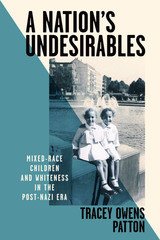 A Nation’s Undesirables: Mixed-Race Children and Whiteness in the Post-Nazi Era
Tracey Owens Patton
Ohio State University Press, 2024 In a moving blend of family history and cutting-edge scholarship, Tracey Owens Patton’s A Nation’s Undesirables synthesizes work in rhetorical postmemory studies, critical adoption studies, Afrofuturism, and more to tell the story of her mother and aunt, Lore and Lilli. Two of thousands of children born to white German women and Black American men after World War II, the twins moved to the United States at age seven, where their mother renounced her parental rights and put them into the adoption system. They did not see her again for fifty-two years. Patton takes up the twins’ story and their reckoning with their mixed-race, Black German identity to disrupt standard narratives around World War II, Black experiences in Germany, and race and adoption. Combining family interviews, historical artifacts, and autoethnographic reflection, Patton composes a new narrative of women and Black German children in the postwar era. In examining the systemic racism of Germany’s efforts to move children like Lore and Lilli out of the country—and the suppression of German women’s bodily autonomy—Patton amplifies the once unacknowledged identities of these Black German children to broaden our understanding of citizenship, racism, and sexism after World War II.
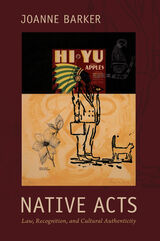 Native Acts: Law, Recognition, and Cultural Authenticity
Joanne Barker
Duke University Press, 2011 In the United States, Native peoples must be able to demonstrably look and act like the Natives of U.S. national narrations in order to secure their legal rights and standing as Natives. How they choose to navigate these demands and the implications of their choices for Native social formations are the focus of this powerful critique. Joanne Barker contends that the concepts and assumptions of cultural authenticity within Native communities potentially reproduce the very social inequalities and injustices of racism, ethnocentrism, sexism, homophobia, and fundamentalism that define U.S. nationalism and, by extension, Native oppression. She argues that until the hold of these ideologies is genuinely disrupted by Native peoples, the important projects for decolonization and self-determination defining Native movements and cultural revitalization efforts are impossible. These projects fail precisely by reinscribing notions of authenticity that are defined in U.S. nationalism to uphold relations of domination between the United States and Native peoples, as well as within Native social and interpersonal relations. Native Acts is a passionate call for Native peoples to decolonize their own concepts and projects of self-determination.
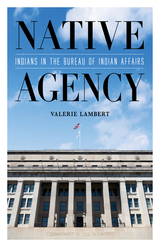 Native Agency: Indians in the Bureau of Indian Affairs
Valerie Lambert
University of Minnesota Press, 2022 What happens when American Indians take over an institution designed to eliminate them?
The Bureau of Indian Affairs was hatched in the U.S. Department of War to subjugate and eliminate American Indians. Yet beginning in the 1970s, American Indians and Alaska Natives took over and now run the agency. Choctaw anthropologist Valerie Lambert argues that, instead of fulfilling settler-colonial goals, the Indians in the BIA have been leveraging federal power to fight settler colonialism, battle white supremacy, and serve the interests of their people. Although the missteps and occasional blunders of the Indians in the BIA have at times damaged the federal–Indian relationship and fueled the ire of their people, and although the BIA is massively underfunded, Indians began crafting the BIA into a Native agency by reformulating the meanings of concepts that lay at its heart—concepts such as tribal sovereignty, treaties, the trust responsibility, and Indian land. At the same time, they pursued actions to strengthen and bolster tribes, to foster healing, to fight the many injustices Indians face, and to restore the Indian land base. This work provides an essential national-level look at an intriguing and impactful form of Indigenous resistance. It describes, in great detail, the continuing assaults made on Native peoples and tribal sovereignty in the United States during the twenty-first century, and it sketches the visions of the future that Indians at the BIA and in Indian Country have been crafting for themselves.
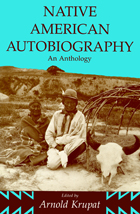 Native American Autobiography: An Anthology
Arnold Krupat
University of Wisconsin Press, 1994 Native American Autobiography is the first collection to bring together the major autobiographical narratives by Native American people from the earliest documents that exist to the present. The thirty narratives included here cover a range of tribes and cultural areas, over a span of more than 200 years.
From the earliest known written memoir—a 1768 narrative by the Reverend Samson Occom, a Mohegan, reproduced as a chapter here—to recent reminiscences by such prominent writers as N. Scott Momaday and Gerald Vizenor, the book covers a broad range of Native American experience. The sections include “Traditional Lives;” “The Christian Indians, from the Eighteenth Century to Indian Removal, 1830;” “The Resisting Indians, from Indian Removal to Wounded Knee, 1830-90;” “The Closed Frontier, 1890-;” “The Anthropologists' Indians, 1900-;” “‘Native American Renaissance,’ 1968-;” and “Traditional Lives Today.” Editor Arnold Krupat provides a general introduction, a historical introduction to each of the seven sections, extensive headnotes for each selection, and suggestions for further reading, making this an ideal resource for courses in American literature, history, anthropology, and Native American studies. General readers, too, will find a wealth of fascinating material in the life stories of these Native American men and women.
"This is the first comprehensive anthology of American Indian autobiography ever published. It will be of interest to virtually anyone teaching or studying the literatures of the native peoples of North America, as well as to a general audience, because of the informative, literate introductions and the absorbing narratives themselves."—William L. Andrews, series editor
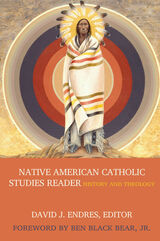 Native American Catholic Studies Reader: History and Theology
David J. Endres
Catholic University of America Press, 2022 Before there was an immigrant American Church, there was a Native American Church. The Native American Catholic Studies Reader offers an introduction to the story of how Native American Catholicism has developed over the centuries, beginning with the age of the missions and leading to inculturated, indigenous forms of religious expression. Though the Native-Christian relationship could be marked by tension, coercion, and even violence, the Christian faith took root among Native Americans and for those who accepted it and bequeathed it to future generations it became not an imposition, but a way of expressing Native identity.
From the perspective of historians and theologians, the Native American Catholic Studies Reader offers a curated collection of essays divided into three sections: education and evangelization; tradition and transition; and Native American lives. Contributors include scholars currently working in the field: Mark Clatterbuck, Damian Costello, Conor J. Donnan, Ross Enochs, Allan Greer, Mark G. Thiel, and Christopher Vecsey, as well as selections from a past generation: Gerald McKevitt, SJ, and Carl F. Starkloff, SJ.
These contributions explore the interaction of missionaries and tribal leaders, the relationship of traditional Native cosmology and religiosity to Christianity, and the role of geography and tribal consciousness in accepting and maintaining indigenous and religious identities. These readings highlight the state of the emergent field of Native-Catholic studies and suggest further avenues for research and publication.
For scholars, teachers, and students, the Native American Catholic Studies Reader explores how the faith of the American Church’s eldest members became a means of expressing and celebrating language, family, and tribe.
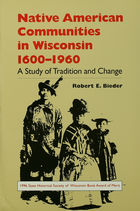 Native American Communities in Wisconsin, 1600–1960: A Study of Tradition and Change
Robert E. Bieder
University of Wisconsin Press, 1995 The first comprehensive history of Native American tribes in Wisconsin, this thorough and thoroughly readable account follows Wisconsin’s Indian communities—Ojibwa, Potawatomie, Menominee, Winnebago, Oneida, Stockbridge-Munsee, and Ottawa—from the 1600s through 1960. Written for students and general readers, it covers in detail the ways that native communities have striven to shape and maintain their traditions in the face of enormous external pressures.
The author, Robert E. Bieder, begins by describing the Wisconsin region in the 1600s—both the natural environment, with its profound significance for Native American peoples, and the territories of the many tribal cultures throughout the region—and then surveys experiences with French, British, and, finally, American contact. Using native legends and historical and ethnological sources, Bieder describes how the Wisconsin communities adapted first to the influx of Indian groups fleeing the expanding Iroquois Confederacy in eastern America and then to the arrival of fur traders, lumber men, and farmers. Economic shifts and general social forces, he shows, brought about massive adjustments in diet, settlement patterns, politics, and religion, leading to a redefinition of native tradition.
Historical photographs and maps illustrate the text, and an extensive bibliography has many suggestions for further reading.
 Native American Folklore in Nineteenth-Century Periodicals
William M. Clements
Ohio University Press, 1986 Though study of American Indian cultures had been fostered for several centuries by missionaries and explorers, it was not until he nineteenth century that a disciplined and systematic approach to the study of New World cultures began to emerge. With Schoolcraft, Powell, Boas, and others, an adventurers’ avocation first became a profession, and it is to these early scholars that we owe the major theoretical perspectives and insights which provided a grounding for American anthropology and folklore studies. In these twenty-one essays, many of which originally appeared in such now obscure periodicals as Southern Literary Messenger, American Whig Review, and DeLestry’s Western Magazine, Clements presents representative works by most of the major early figures in the field. The collection includes early statements and applications of most of the theoretical approaches to folklore employed in the nineteenth century, and it encompasses each of the major folklore genres studied by nineteenth-century researchers. Extensive headnotes to each essay provide information about the author, discussion of the theoretical context of each essay, and direction to more contemporary treatments of the theories and materials involved, and the problems addressed. These together with a brief introduction tracing the genesis of American folklore studies, and chronological arrangement of the articles themselves, make Native American Folklore a convenient introduction to and survey of the major ideas and figures of American folklore studies in its formative period.
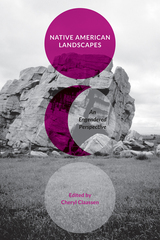 Native American Landscapes: An Engendered Perspective
Cheryl Claassen
University of Tennessee Press, 2016 This collection of essays focuses on what Cheryl Claassen terms the “multi-vocal” landscape—the idea that different groups and genders look upon the same natural features but perceive different meanings and potential in what they are seeing. Through ten chapters, various contributors showcase the ways in which native peoples see, and interact with, the natural world. At the heart of this book is the idea that Europeans associated nature with the feminine and saw the natural world as a passive frontier to be dominated. Native Americans, however, looked at landscape differently. They saw nature as a place in which to engage in complex negotiations between spirits and humans. This approach to nature cemented a relationship to the land based more on a partnership rather than subjugation.
These essays deepen our understanding of the interaction between native people and the land. While other books focus on the gendered gaze of European men upon the landscape, this collection emphasizes that native men and native women looked upon natural formations and constructed landscapes differently from one another, a difference in perception that is important for archaeologists and anthropologists to understand. While there have been advances toward admitting this more complex view in the rest of the world, Native American Landscapes is the first to focus on how native men and women viewed the world around them.
Native American Landscapes is organized by region, taking readers across the country from the rock shelters of the Cumberland Plateau, in the east, to the Mojave Desert and the Mexican Gulf Coast, then north to what is now British Columbia and farther west to Hawaii. Readers of this collection, through a study of creation myths, vision quests, fertility shrines, and other ritualized uses of landscape, will learn more about the land and about humans’ perception of our natural surroundings, which forms the bedrock of our present relationship with the natural world.
CHERYL CLAASSEN is professor of anthropology at Appalachian State University. She is the author or editor of six books on Native American prehistory, including Feasting with Shellfish in the Southern Ohio Valley; Shells, Rituals, and Beliefs in Archaic North America; and Women in Prehistory: North America and Mesoamerica.
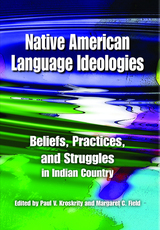 Native American Language Ideologies: Beliefs, Practices, and Struggles in Indian Country
Edited by Paul V. Kroskrity and Margaret C. Field
University of Arizona Press, 2009 Beliefs and feelings about language vary dramatically within and across Native American cultural groups and are an acknowledged part of the processes of language shift and language death. This volume samples the language ideologies of a wide range of Native American communities--from the Canadian Yukon to Guatemala--to show their role in sociocultural transformation.
These studies take up such active issues as "insiderness" in Cherokee language ideologies, contradictions of space-time for the Northern Arapaho, language socialization and Paiute identity, and orthography choices and language renewal among the Kiowa. The authors--including members of indigenous speech communities who participate in language renewal efforts--discuss not only Native Americans' conscious language ideologies but also the often-revealing relationship between these beliefs and other more implicit realizations of language use as embedded in community practice.
The chapters discuss the impact of contemporary language issues related to grammar, language use, the relation between language and social identity, and emergent language ideologies themselves in Native American speech communities. And although they portray obvious variation in attitudes toward language across communities, they also reveal commonalities--notably the emergent ideological process of iconization between a language and various national, ethnic, and tribal identities.
As fewer Native Americans continue to speak their own language, this timely volume provides valuable grounded studies of language ideologies in action--those indigenous to Native communities as well as those imposed by outside institutions or language researchers. It considers the emergent interaction of indigenous and imported ideologies and the resulting effect on language beliefs, practices, and struggles in today's Indian Country as it demonstrates the practical implications of recognizing a multiplicity of indigenous language ideologies and their impact on heritage language maintenance and renewal.
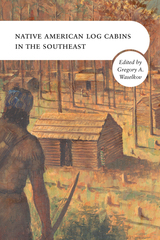 Native American Log Cabins in the Southeast
Gregory A. Waselkov
University of Tennessee Press, 2019 Southeastern Native American forms of domestic architecture underwent multiple transitions between the mid-eighteenth to early nineteenth centuries. In Native American Log Cabins in the Southeast, Gregory A. Waselkov and ten colleagues track the origins of Native American cabins, structures that incorporated a range of features borrowed from indigenous post-in ground building traditions, Euroamerican horizontal notched-log construction, and elements introduced by Africans and African Americans. Grounded in archaeological investigation, their essays illuminate the distinctive cabin forms developed by various southeastern Native groups, including the Cherokee, Creek, Choctaw, and Catawba peoples.
In a rapidly changing social, economic, and political landscape at the frontiers of an expansionist United States, the log cabin, a northern European house form, proved equally adaptable to the needs of settlers, slaves, and Native peoples. Each found ways to make log cabins their own. Beneath these deceptively simple hewn facades, indigenous principles of correctness guided southeastern Indians’ uses of interior cabin space, creations of raised clay hearths, and maintenance of pits that gave occupants access to the regenerative properties of the Beneath World. The chapters in this volume make important contributions toward a better understanding of houses and households in the Native Southeast by marshalling new data, methods, and theory to address an important but understudied phenomenon.
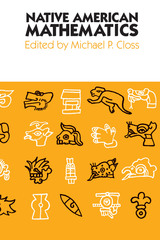 Native American Mathematics
By Michael P. Closs
University of Texas Press, 1996 There is no question that native cultures in the New World exhibit many forms of mathematical development. This Native American mathematics can best be described by considering the nature of the concepts found in a variety of individual New World cultures. Unlike modern mathematics in which numbers and concepts are expressed in a universal mathematical notation, the numbers and concepts found in native cultures occur and are expressed in many distinctive ways. Native American Mathematics, edited by Michael P. Closs, is the first book to focus on mathematical development indigenous to the New World. Spanning time from the prehistoric to the present, the thirteen essays in this volume attest to the variety of mathematical development present in the Americas. The data are drawn from cultures as diverse as the Ojibway, the Inuit (Eskimo), and the Nootka in the north; the Chumash of Southern California; the Aztec and the Maya in Mesoamerica; and the Inca and Jibaro of South America. Among the strengths of this collection are this diversity and the multidisciplinary approaches employed to extract different kinds of information. The distinguished contributors include mathematicians, linguists, psychologists, anthropologists, and archaeologists.
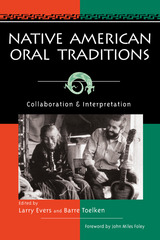 Native American Oral Traditions: Collaboration and Interpretation
Larry Evers
Utah State University Press, 2001 This collection provides a benchmark that helps secure the position of collaboration between Native American and non-Native American scholars in the forefront of study of Native oral traditions. Seven sets of intercultural authors present Native American oral texts with commentary, exploring dimensions of perspective, discovery, and meaning that emerge through collaborative translation and interpretation. The texts studied all come from the American West but include a rich variety of material, since their tribal sources range from the Yupik in the Arctic to the Yaqui in the Sonoran Desert.
This presentation of jointly authored work is timely: it addresses increasing interest in, calls for, and movement toward reflexivity in the relationships between scholars and the Native communities they study, and it responds to the renewed commitment in those communities to asserting more control over representations of their traditions. Although Native and academic communities have long tried to work together in the study of culture and literature, the relationship has been awkward and imbalanced toward the academics. In many cases, the contributions of Native assistants, informants, translators, and field workers to the work of professional ethnographers has been inadequately credited, ignored, or only recently uncovered. Native Americans usually have not participated in planning and writing such projects. Native American Oral Traditions provides models for overcoming such obstacles to interpreting and understanding Native oral literature in relation to the communities and cultures from which it comes.
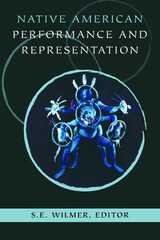 Native American Performance and Representation
Edited by S. E. Wilmer
University of Arizona Press, 2009 Native performance is a multifaceted and changing art form as well as a swiftly growing field of research. Native American Performance and Representation provides a wider and more comprehensive study of Native performance, not only its past but also its present and future. Contributors use multiple perspectives to look at the varying nature of Native performance strategies. They consider the combination and balance of the traditional and modern techniques of performers in a multicultural world. This collection presents diverse viewpoints from both scholars and performers in this field, both Natives and non-Natives. Important and well-respected researchers and performers such as Bruce McConachie, Jorge Huerta, and Daystar/Rosalie Jones offer much-needed insight into this quickly expanding field of study.
This volume examines Native performance using a variety of lenses, such as feminism, literary and film theory, and postcolonial discourse. Through the many unique voices of the contributors, major themes are explored, such as indigenous self-representations in performance, representations by nonindigenous people, cultural authenticity in performance and representation, and cross-fertilization between cultures. Authors introduce important, though sometimes controversial, issues as they consider the effects of miscegenation on traditional customs, racial discrimination, Native women’s position in a multicultural society, and the relationship between authenticity and hybridity in Native performance.
An important addition to the new and growing field of Native performance, Wilmer’s book cuts across disciplines and areas of study in a way no other book in the field does. It will appeal not only to those interested in Native American studies but also to those concerned with women’s and gender studies, literary and film studies, and cultural studies.
Native American Place Names of Indiana
Michael McCafferty
University of Illinois Press, 2007 A linguistic history of Native American place-names in Indiana In tracing the roots of Indiana place names, Michael McCafferty focuses on those created and used by local Native Americans. Drawing from exciting new sources that include three Illinois dictionaries from the eighteenth century, the author documents the language used to describe landmarks essential to fur traders in Les Pays d’en Haut and settlers of the Old Northwest territory. Impeccably researched, this study details who created each name, as well as when, where, how and why they were used. The result is a detailed linguistic history of lakes, streams, cities, counties, and other Indiana names. Each entry includes native language forms, translations, and pronunciation guides, offering fresh historical insight into the state of Indiana.
 Native American Slavery in the Seventeenth Century
Arne Bialuschewski, special issue editor
Duke University Press, 2017 This issue sheds new light on the role of Native American slavery in the development of colonial economies and in shaping the colonial world across cultural and political boundaries. Though enslavement took various forms—from outright chattel to limited-term servitude—indigenous slavery was ubiquitous in the major colonial empires by the late seventeenth century. Focusing on five examples of Native American slavery in the early modern period, the contributors present important new frames for scholarship in this growing area of study. Articles address an early Spanish abolition campaign, buccaneers’ involvement in the enslavement of Maya groups, native slaves in the early plantation economy of Barbados, the enslavement of indigenous surrenderers after King Philip’s War, and the interactions between French explorers and indigenous slaves in the Lower Mississippi Valley.
Contributors. Carolyn Arena, Arne Bialuschewski, Linford D. Fisher, George Edward Milne, Andrés Reséndez
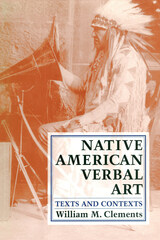 Native American Verbal Art: Texts and Contexts
William M. Clements
University of Arizona Press, 1996 For more than four centuries, Europeans and Euroamericans have been making written records of the spoken words of American Indians. While some commentators have assumed that these records provide absolutely reliable information about the nature of Native American oral expression, even its aesthetic qualities, others have dismissed them as inherently unreliable. In Native American Verbal Art: Texts and Contexts, William Clements offers a comprehensive treatment of the intellectual and cultural constructs that have colored the textualization of Native American verbal art. Clements presents six case studies of important moments, individuals, and movements in this history. He recounts the work of the Jesuits who missionized in New France during the seventeenth and eighteenth centuries and textualized and theorized about the verbal expressions of the Iroquoians and Algonquians to whom they were spreading Christianity.
He examines in depth Henry Timberlake’s 1765 translation of a Cherokee war song that was probably the first printed English rendering of a Native American "poem." He discusses early-nineteenth-century textualizers and translators who saw in Native American verbal art a literature manqué that they could transform into a fully realized literature, with particular attention to the work of Henry Rowe Schoolcraft, an Indian agent and pioneer field collector who developed this approach to its fullest. He discusses the "scientific" textualizers of the late nineteenth century who viewed Native American discourse as a data source for historical, ethnographic, and linguistic information, and he examines the work of Natalie Curtis, whose field research among the Hopis helped to launch a wave of interest in Native Americans and their verbal art that continues to the present.
In addition, Clements addresses theoretical issues in the textualization, translation, and anthologizing of American Indian oral expression. In many cases the past records of Native American expression represent all we have left of an entire verbal heritage; in most cases they are all that we have of a particular heritage at a particular point in history. Covering a broad range of materials and their historical contexts, Native American Verbal Art identifies the agendas that have informed these records and helps the reader to determine what remains useful in them. It will be a welcome addition to the fields of Native American studies and folklore.
The Native Americans
Elizabeth Glenn and Stewart Rafert
Indiana Historical Society Press, 2009 In the second volume of the IHS Press’s Peopling Indiana Series, anthropologist Elizabeth Glenn and ethnohistorian Stewart Rafert put readers in touch with the first people to inhabit the Hoosier state, exploring what it meant historically to be an Indian in this land and discussing the resurgence of native life in the state today. Many natives either assimilated into white culture or hid their Indian identity. World War II dramatically changed this scenario when Native Americans served in the U.S. military and on the home front. Afterward, Indians from many tribal lineages flocked to Indiana to find work. Along with Indiana's Miami and Potawatomi, they are creating a diverse Indian culture that enriches the lives of all Hoosiers.
Native Americans and Public Policy
Fremont J. Lyden
University of Pittsburgh Press, 1992
Native Americans, who are recognized simultaneously as sovereign tribal groups and as American citizens, present American society and its policy-making process with a problem fundamentally different from that posed by other ethnic minorities. In these essays, the contributors discuss the historical background, certain pathologies of Indian-white relations, questions of legal sovereignty and economic development, and efforts to find new ways of successfully resolving recent controversies.
Contributors: Gary C. Anders; Russel Lawrence Barsh; Guillermo Bartelt; Duane Champagne; Ward Churchill; Michael J. Evans; M. Annette Jaimes; Anne McCullogh; C. Patrick Morris; Nicholas C. Peroff; Kurt Russo; Dave Somers; Richard W. Stoffle; Ronald L. Trosper; Steven Zubalik; and the editors.
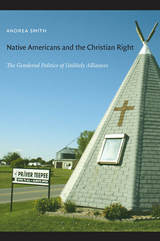 Native Americans and the Christian Right: The Gendered Politics of Unlikely Alliances
Andrea Smith
Duke University Press, 2008 In Native Americans and the Christian Right, Andrea Smith advances social movement theory beyond simplistic understandings of social-justice activism as either right-wing or left-wing and urges a more open-minded approach to the role of religion in social movements. In examining the interplay of biblical scripture, gender, and nationalism in Christian Right and Native American activism, Smith rethinks the nature of political strategy and alliance-building for progressive purposes, highlighting the potential of unlikely alliances, termed “cowboys and Indians coalitions” by one of her Native activist interviewees. She also complicates ideas about identity, resistance, accommodation, and acquiescence in relation to social-justice activism. Smith draws on archival research, interviews, and her own participation in Native struggles and Christian Right conferences and events. She considers American Indian activism within the Promise Keepers and new Charismatic movements. She also explores specific opportunities for building unlikely alliances. For instance, while evangelicals’ understanding of the relationship between the Bible and the state may lead to reactionary positions on issues including homosexuality, civil rights, and abortion, it also supports a relatively progressive position on prison reform. In terms of evangelical and Native American feminisms, she reveals antiviolence organizing to be a galvanizing force within both communities, discusses theories of coalition politics among both evangelical and indigenous women, and considers Native women’s visions of sovereignty and nationhood. Smith concludes with a reflection on the implications of her research for the field of Native American studies.
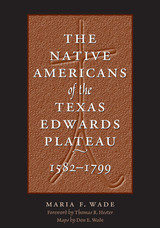 The Native Americans of the Texas Edwards Plateau, 1582-1799
By Maria F. Wade
University of Texas Press, 2003 2003 – Texas Old Missions and Forts Restoration Association Book Award Winner – Texas Catholic Historical Society
2004 – Finalist: Friends of the Dallas Public Library Award for Book Making the Most Significant Contribution to Knowledge – Texas Institute of Letters The region that now encompasses Central Texas and northern Coahuila, Mexico, was once inhabited by numerous Native hunter-gather groups whose identities and lifeways we are only now learning through archaeological discoveries and painstaking research into Spanish and French colonial records. From these key sources, Maria F. Wade has compiled this first comprehensive ethnohistory of the Native groups that inhabited the Texas Edwards Plateau and surrounding areas during most of the Spanish colonial era. Much of the book deals with events that took place late in the seventeenth century, when Native groups and Europeans began to have their first sustained contact in the region. Wade identifies twenty-one Native groups, including the Jumano, who inhabited the Edwards Plateau at that time. She offers evidence that the groups had sophisticated social and cultural mechanisms, including extensive information networks, ladino cultural brokers, broad-based coalitions, and individuals with dual-ethnic status. She also tracks the eastern movement of Spanish colonizers into the Edwards Plateau region, explores the relationships among Native groups and between those groups and European colonizers, and develops a timeline that places isolated events and singular individuals within broad historical processes.
 Native and Ornamental Conifers in the Pacific Northwest: Identification, Botany and Natural History
Elizabeth A. Price
Oregon State University Press, 2022 Most conifer guides available for the Pacific Northwest focus on native species observed in the wild. Native and Ornamental Conifers in the Pacific Northwest presents an integrated perspective for understanding and identifying conifers in any landscape where native and ornamental species grow alongside each other. It is suitable for landscape designers, horticulturalists, arborists, gardeners, environmental scientists, and botanists.
Based on her experiences teaching workshops on conifer identification and cultivation, Elizabeth Price has developed Jargon-free photographic charts, which allow for side-by-side comparison of conifer features and guide the reader to species identification. The charts are detailed enough for specialists yet accessible to amateurs.
The book includes extensive material on the characteristics, botany, and natural history of conifer plant families, genera, and species, all illustrated with original photographs. Research across many disciplines is blended with direct observation and personal experience, creating a book that goes beyond identification and is both rigorous and engaging.
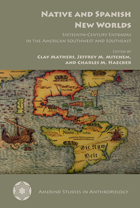 Native and Spanish New Worlds: Sixteenth-Century Entradas in the American Southwest and Southeast
Edited by Clay Mathers, Jeffrey M. Mitchem, and Charles M. Haecker
University of Arizona Press, 2013 Spanish-led entradas—expeditions bent on the exploration and control of new territories—took place throughout the sixteenth century in what is now the southern United States. Although their impact was profound, both locally and globally, detailed analyses of these encounters are notably scarce. Focusing on several major themes—social, economic, political, military, environmental, and demographic—the contributions gathered here explore not only the cultures and peoples involved in these unique engagements but also the wider connections and disparities between these borderlands and the colonial world in general during the first century of Native–European contact in North America. Bringing together research from both the southwestern and southeastern United States, this book offers a comparative synthesis of Native–European contacts and their consequences in both regions. The chapters also engage at different scales of analysis, from locally based research to macro-level evaluations, using documentary, paleoclimatic, and regional archaeological data.
No other volume assembles such a wide variety of archaeological, ethnohistorical, environmental, and biological information to elucidate the experience of Natives and Europeans in the early colonial world of Northern New Spain, and the global implications of entradas during this formative period in borderlands history.
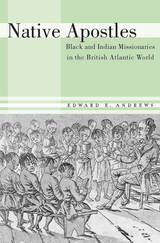 Native Apostles: Black and Indian Missionaries in the British Atlantic World
Edward E. Andrews
Harvard University Press, 2013 As Protestantism expanded across the Atlantic world in the seventeenth and eighteenth centuries, most evangelists were not white Anglo-Americans, as scholars have long assumed, but members of the same groups that missionaries were trying to convert. Native Apostles offers one of the most significant untold stories in the history of early modern religious encounters, marshalling wide-ranging research to shed light on the crucial role of Native Americans, Africans, and black slaves in Protestant missionary work. The result is a pioneering view of religion’s spread through the colonial world.
From New England to the Caribbean, the Carolinas to Africa, Iroquoia to India, Protestant missions relied on long-forgotten native evangelists, who often outnumbered their white counterparts. Their ability to tap into existing networks of kinship and translate between white missionaries and potential converts made them invaluable assets and potent middlemen. Though often poor and ostracized by both whites and their own people, these diverse evangelists worked to redefine Christianity and address the challenges of slavery, dispossession, and European settlement. Far from being advocates for empire, their position as cultural intermediaries gave native apostles unique opportunities to challenge colonialism, situate indigenous peoples within a longer history of Christian brotherhood, and harness scripture to secure a place for themselves and their followers.
Native Apostles shows that John Eliot, Eleazar Wheelock, and other well-known Anglo-American missionaries must now share the historical stage with the black and Indian evangelists named Hiacoomes, Good Peter, Philip Quaque, John Quamine, and many more.
 Native Apparitions: Critical Perspectives on Hollywood’s Indians
Edited by Steve Pavlik, M. Elise Marubbio, and Tom Holm
University of Arizona Press, 2017 In Cherokee, the term for motion picture is a-da-yv-la-ti or a-da-yu-la-ti, meaning “something that appears.” In essence, motion pictures are machine-produced apparitions. While the Cherokee language recognizes that movies are not reality, Western audiences may on some level assume that film portrayals offer sincere depictions of imagined possibilities, creating a logic where what is projected must in part be true, stereotype or not.
Native Apparitions offers a critical intervention and response to Hollywood’s representations of Native peoples in film, from historical works by director John Ford to more contemporary works, such as Apocalypto and Avatar. But more than a critique of stereotypes, this book is a timely call for scholarly activism engaged in Indigenous media sovereignty. The collection clusters around three approaches: retrospective analysis, individual film analysis, and Native- and industry-centered testimonials and interviews, which highlight indigenous knowledge and cultural context, thus offering a complex and multilayered dialogic and polyphonic response to Hollywood’s representations.
Using an American Indian studies framework, Native Apparitions deftly illustrates the connection between Hollywood’s representations of Native peoples and broader sociopolitical and historical contexts connected to colonialism, racism, and the Western worldview. Most importantly, it shows the impact of racializing stereotypes on Native peoples, and the resilience of Native peoples in resisting, transcending, and reframing Hollywood’s Indian tropes.
CONTRIBUTORS
Chadwick Allen
Richard Allen
Joanna Hearne
Tom Holm
Jan-Christopher Horak
Jacqueline Land
Andrew Okpeaha MacLean
M. Elise Marubbio
Steve Pavlik
Rose Roberts
Myrton Running Wolf
Richard M. Wheelock
|
|

